

Is Time Travel Possible?
We all travel in time! We travel one year in time between birthdays, for example. And we are all traveling in time at approximately the same speed: 1 second per second.
We typically experience time at one second per second. Credit: NASA/JPL-Caltech
NASA's space telescopes also give us a way to look back in time. Telescopes help us see stars and galaxies that are very far away . It takes a long time for the light from faraway galaxies to reach us. So, when we look into the sky with a telescope, we are seeing what those stars and galaxies looked like a very long time ago.
However, when we think of the phrase "time travel," we are usually thinking of traveling faster than 1 second per second. That kind of time travel sounds like something you'd only see in movies or science fiction books. Could it be real? Science says yes!

This image from the Hubble Space Telescope shows galaxies that are very far away as they existed a very long time ago. Credit: NASA, ESA and R. Thompson (Univ. Arizona)
How do we know that time travel is possible?
More than 100 years ago, a famous scientist named Albert Einstein came up with an idea about how time works. He called it relativity. This theory says that time and space are linked together. Einstein also said our universe has a speed limit: nothing can travel faster than the speed of light (186,000 miles per second).
Einstein's theory of relativity says that space and time are linked together. Credit: NASA/JPL-Caltech
What does this mean for time travel? Well, according to this theory, the faster you travel, the slower you experience time. Scientists have done some experiments to show that this is true.
For example, there was an experiment that used two clocks set to the exact same time. One clock stayed on Earth, while the other flew in an airplane (going in the same direction Earth rotates).
After the airplane flew around the world, scientists compared the two clocks. The clock on the fast-moving airplane was slightly behind the clock on the ground. So, the clock on the airplane was traveling slightly slower in time than 1 second per second.
Credit: NASA/JPL-Caltech
Can we use time travel in everyday life?
We can't use a time machine to travel hundreds of years into the past or future. That kind of time travel only happens in books and movies. But the math of time travel does affect the things we use every day.
For example, we use GPS satellites to help us figure out how to get to new places. (Check out our video about how GPS satellites work .) NASA scientists also use a high-accuracy version of GPS to keep track of where satellites are in space. But did you know that GPS relies on time-travel calculations to help you get around town?
GPS satellites orbit around Earth very quickly at about 8,700 miles (14,000 kilometers) per hour. This slows down GPS satellite clocks by a small fraction of a second (similar to the airplane example above).

GPS satellites orbit around Earth at about 8,700 miles (14,000 kilometers) per hour. Credit: GPS.gov
However, the satellites are also orbiting Earth about 12,550 miles (20,200 km) above the surface. This actually speeds up GPS satellite clocks by a slighter larger fraction of a second.
Here's how: Einstein's theory also says that gravity curves space and time, causing the passage of time to slow down. High up where the satellites orbit, Earth's gravity is much weaker. This causes the clocks on GPS satellites to run faster than clocks on the ground.
The combined result is that the clocks on GPS satellites experience time at a rate slightly faster than 1 second per second. Luckily, scientists can use math to correct these differences in time.

If scientists didn't correct the GPS clocks, there would be big problems. GPS satellites wouldn't be able to correctly calculate their position or yours. The errors would add up to a few miles each day, which is a big deal. GPS maps might think your home is nowhere near where it actually is!
In Summary:
Yes, time travel is indeed a real thing. But it's not quite what you've probably seen in the movies. Under certain conditions, it is possible to experience time passing at a different rate than 1 second per second. And there are important reasons why we need to understand this real-world form of time travel.
If you liked this, you may like:

Time Travel: Observing Cosmic History
By observing light from faraway cosmic objects, the Hubble Space Telescope is like a time machine. Light takes time to reach Hubble, because it travels great distances. That means images captured by Hubble today, show what the objects looked like years ago!
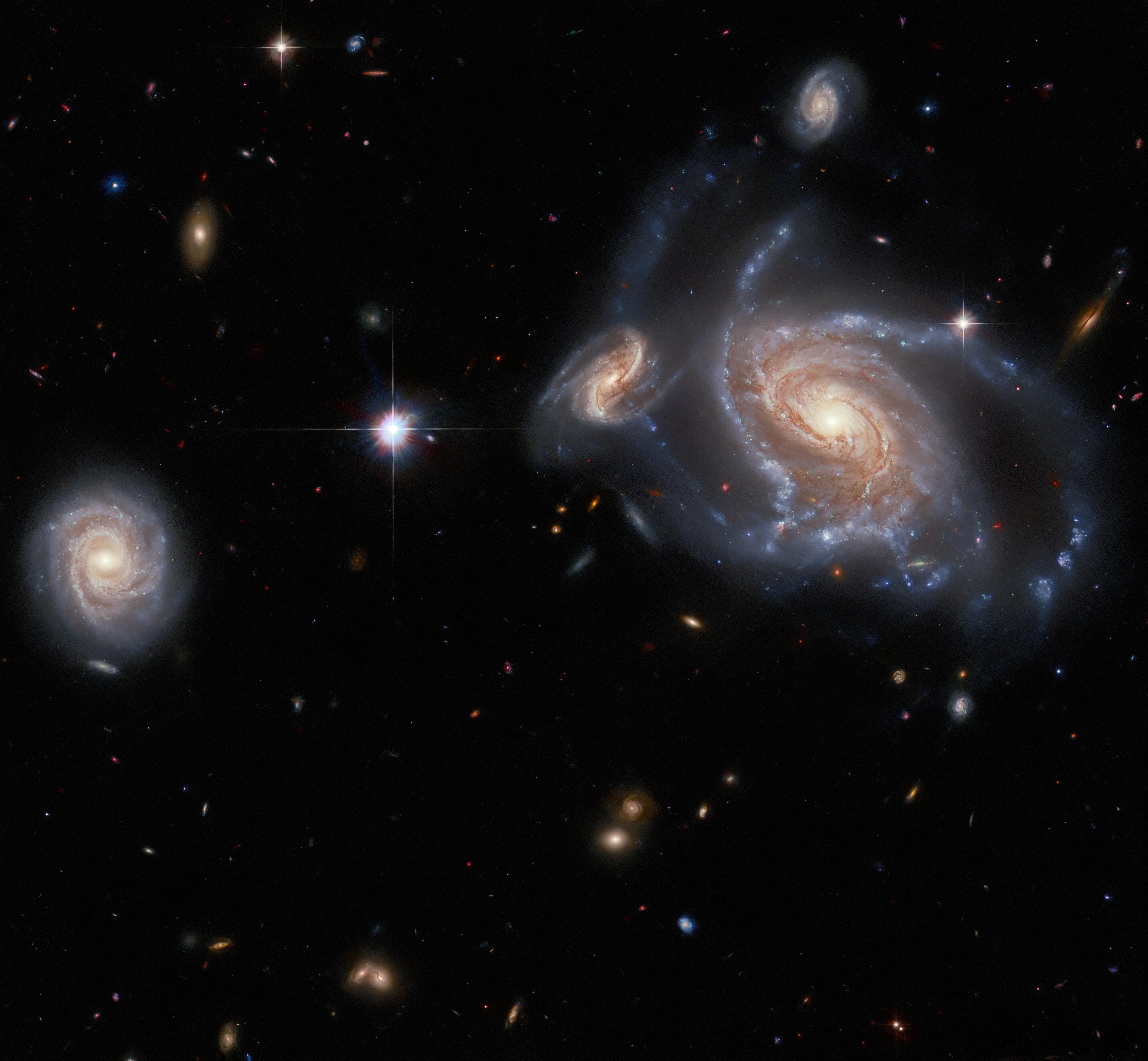
The Hubble Space Telescope is many things. It’s an observatory, a satellite, and an icon of cultural and scientific significance – but perhaps most interestingly, Hubble is also a time machine.
Hubble isn’t that far away, locked in a low-Earth orbit just a few hundred miles up that takes about 90 minutes to complete. But with its position just above Earth’s murky atmosphere, Hubble’s transformative view of our universe literally lets us witness our universe’s past. It allows us to effectively travel back in time.
How does that work? After all, Hubble doesn’t travel beyond our solar system, or even our home planet’s gravity. It certainly doesn’t have any sci-fi elements you might find in Doctor Who or Back to the Future.
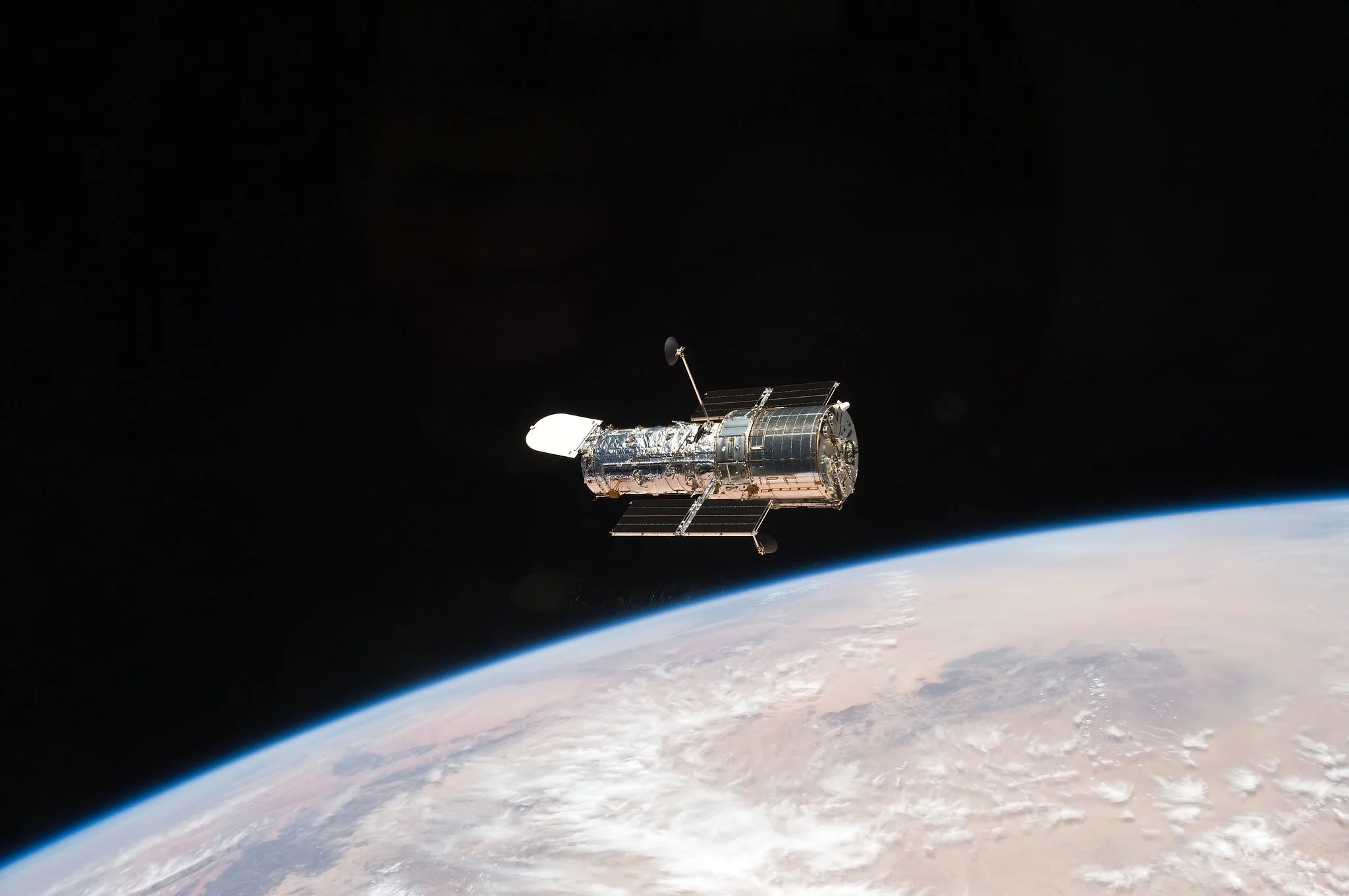
Light Travel
The answer is simply light.
The term “light-year” shows up a lot in astronomy. This is a measure of distance that means exactly what it says – the distance that light travels in one year. Given that the speed of light is 186,000 miles (299,000 kilometers) per second, light can cover some serious ground over the course of 365 days. To be precise, almost 6 trillion miles (9.5 trillion kilometers)!
Traveling Back in Time: 8 minutes
Hubble works by gathering light from objects in our universe – some as close as our Moon, and some as distant as galaxy clusters that are billions of light-years away. All that light takes time to reach the telescope, just as it takes time for light to travel from its source to our eyes. For example, our Sun is located about 93 million miles (150 million kilometers) from Earth. That means that it takes roughly eight minutes for its light to reach us here on our planet, so when we look at the Sun (though directly is never recommended!) we see it exactly as it was eight minutes in the past.
Cosmically speaking, the 93 million miles between us and the Sun are nothing. We orbit around just one of billions of stars in the Milky Way Galaxy, which is one of countless trillions of galaxies in the universe.
With that in mind, time travel gets more intense when Hubble observes objects beyond our star system.
Traveling Back in Time: 4 years
Aside from our Sun, the next closest star to us is named Proxima Centauri. It’s about four light-years away, which makes it a close neighbor on a universal scale. But even with Hubble’s sharp, powerful vision, Proxima Centauri remains a point-like object – demonstrating our universe’s unfathomably large size.
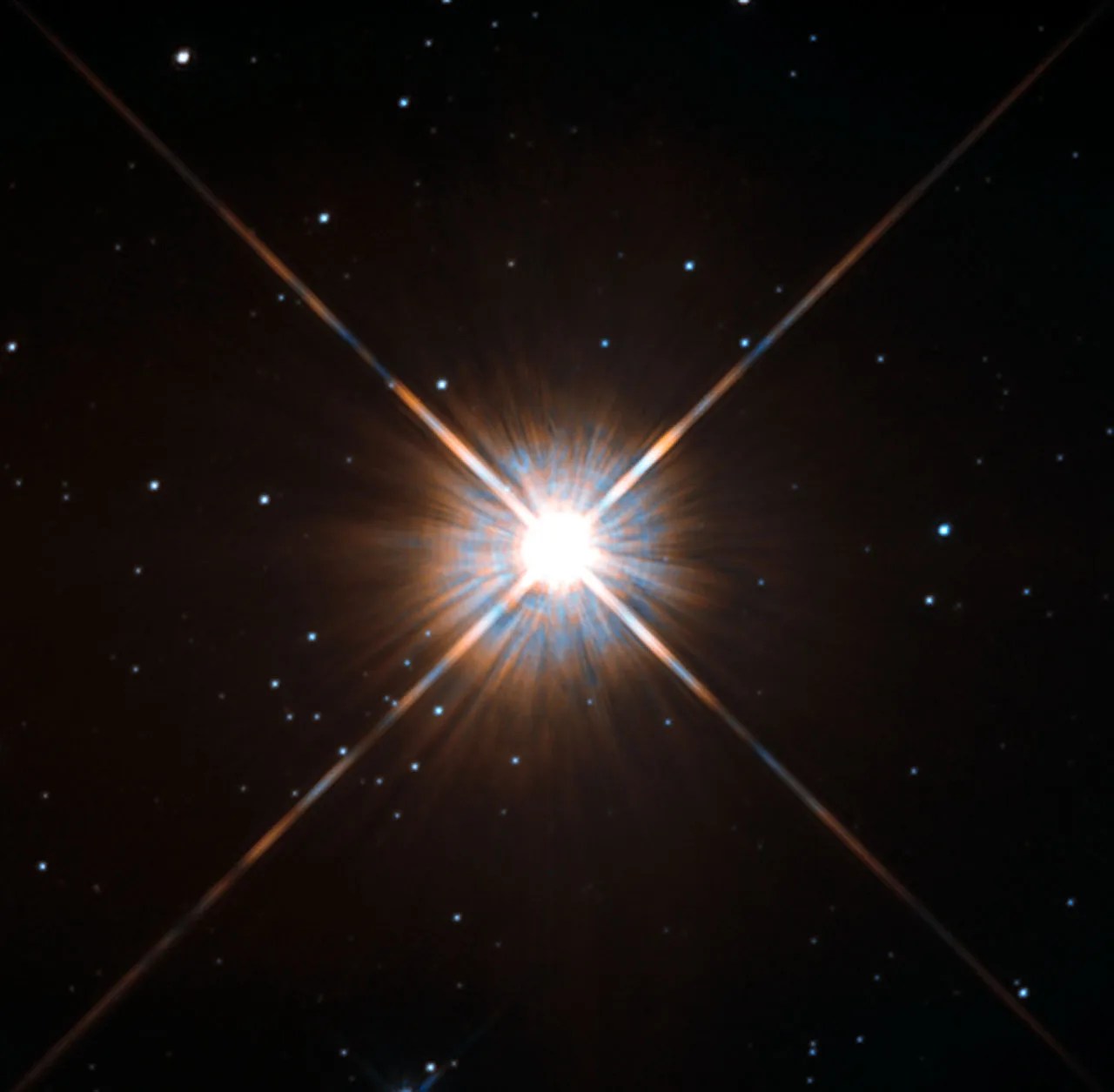
Traveling Back in Time: 700 years
Another stellar target of Hubble’s is named Betelgeuse, which is about 700 light-years from Earth. Again, this means that when Hubble looks at Betelgeuse, the star appears exactly as it was 700 years ago. As one of the brightest stars in our sky, astronomers believe it’s likely that even the earliest humans knew of it, as this star appears in stories from several cultures.
This red supergiant star began to dim significantly in the fall of 2019, losing about 60% of its brightness within months. But by April 2020, its regular brightness returned. Hubble studied Betelgeuse and found out that the star “blew its top” – it went through a surface mass ejection, in which the star spewed out a large amount of its surface material into space. When that material in space cooled down, it became a dust cloud that temporarily blocked some of the star’s light.
Hubble’s unique ability to observe in ultraviolet light helped reveal the details of this dimming event and its aftermath. In this range of light, Hubble can better observe the hot layers of atmosphere above a star’s surface.
The telescope continues to be the go-to observatory for scientists who study Betelgeuse. Because it’s taken this long for the light from Betelgeuse to reach us, only in very recent history have we witnessed a cosmic event unfolding that really occurred about 700 years ago!
Scientists also believe that Betelgeuse is on the verge of going supernova – dying in an explosive event. In fact, it may have already done so, but the light from the explosion still hasn’t reached us. There’s a good chance that Betelgeuse no longer exists, though we can still see it today from Earth.
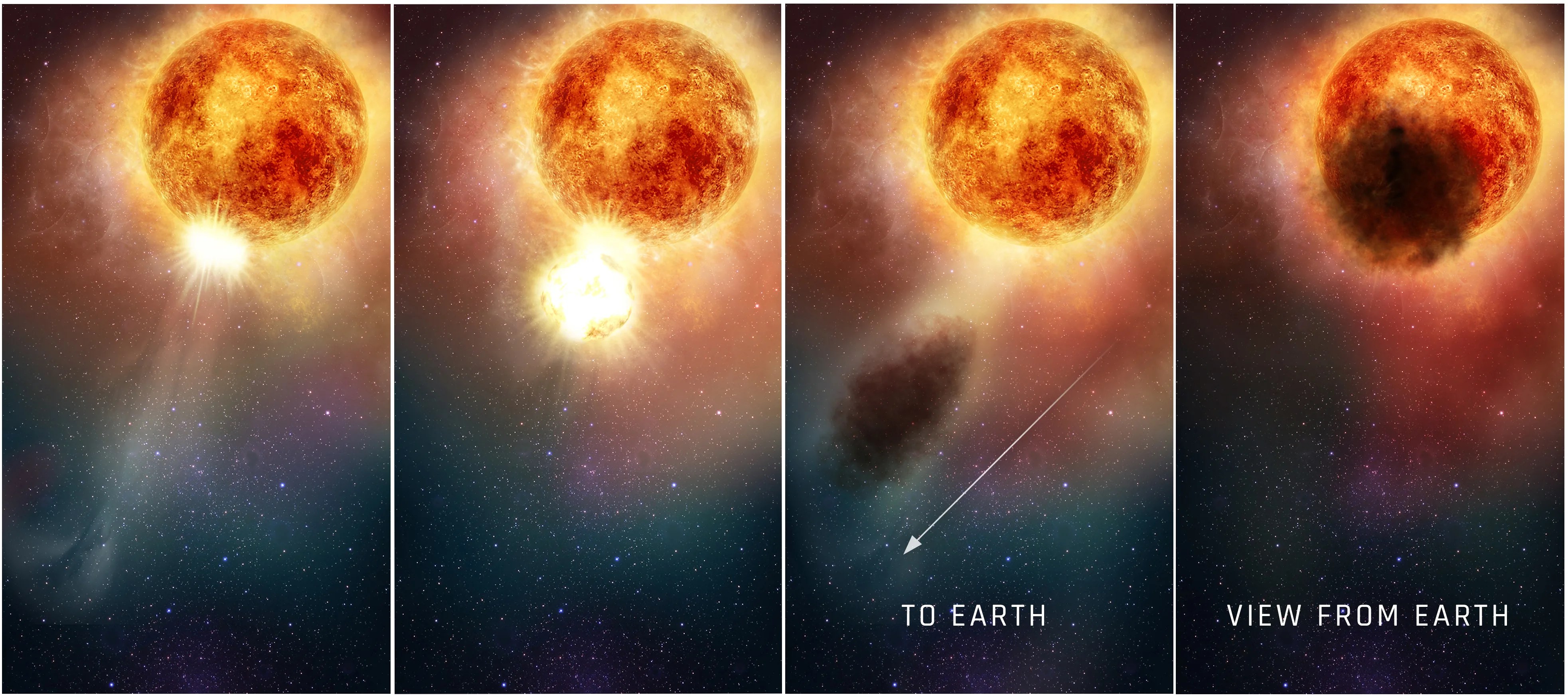
Traveling Back in Time: 6,500 years
Nebulae are clouds of gas and dust where stars are birthed, or the remnants of a dead or dying star itself. These beautiful, ethereal cosmic objects are the subject of some of Hubble’s most iconic images, but they can also teach us more about how our universe behaves and evolves.
For example, a favorite target for Hubble is the Crab Nebula, located about 6,500 light-years away. There are records from 1054 CE written by Chinese astronomers noting the new presence of a shockingly bright “guest” star in the sky, visible even during the daytime. Turns out, they actually saw a supernova – a star’s explosive death – which became the Crab Nebula, made up by the remnants of this violent event. Of course, those Chinese astronomers witnessed a supernova explosion that occurred about 5446 BCE, but it took the light from the explosion 6,500 years to reach Earth in the year 1054.
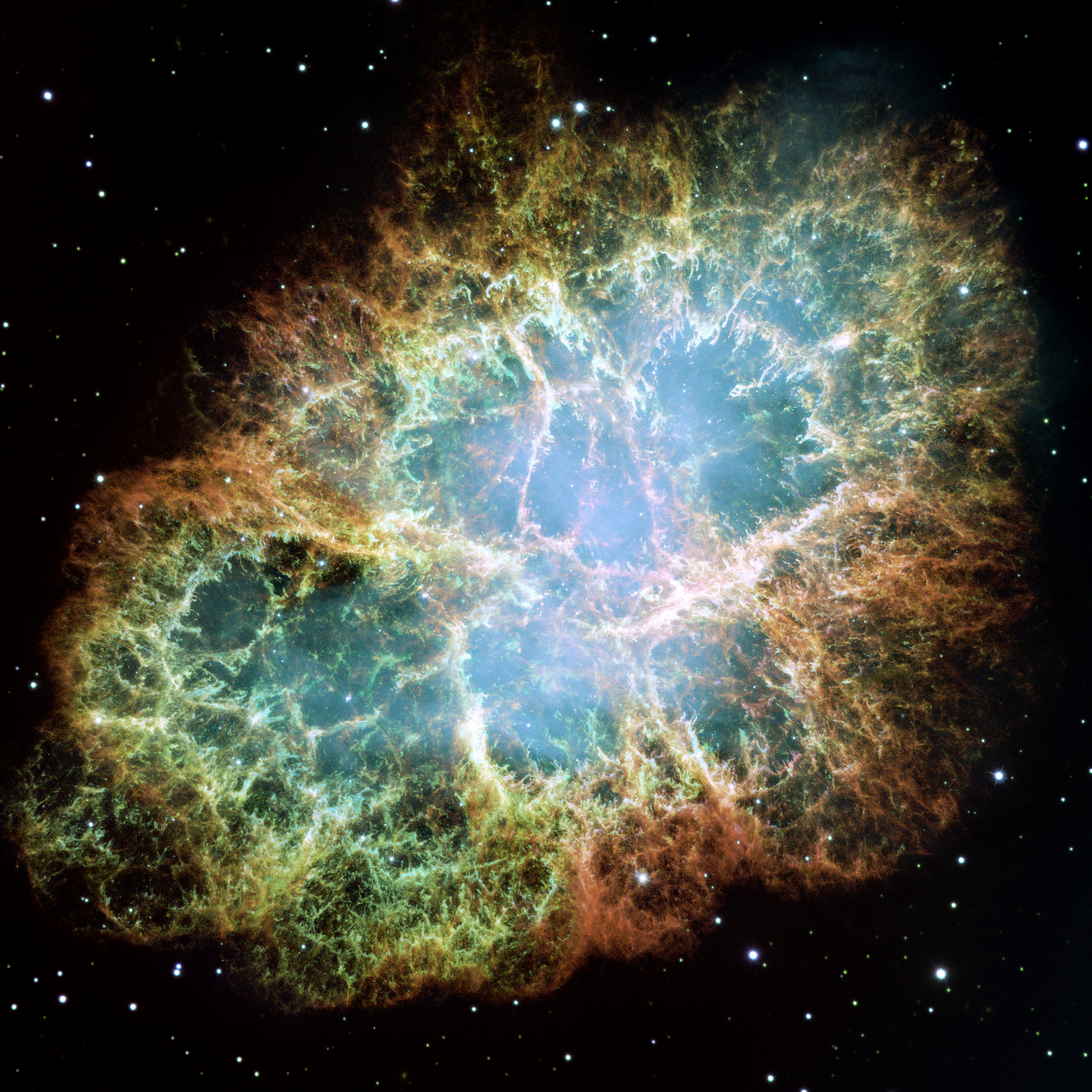
Traveling Back in Time: 2.5 million years
When Hubble looks beyond our own galaxy, we can watch cosmic history unfold over eons.
The Andromeda Galaxy is a whopping 2.5 million light-years away, but that’s just the closest major galaxy to us here in the Milky Way. Observing Andromeda is like staring into a vision from 2.5 million years ago – back during the Paleolithic period on Earth, when very early humans existed.
And if Andromeda is the closest major galaxy to us, it’s difficult to comprehend just how far the light from the most distant observed galaxies has traveled.

Traveling Back in Time: 12.9 billion years
Another Hubble record is for observing the most distant individual star ever detected, named Earendel. This faraway star emitted its light within the first billion years of the universe, which is about 13.8 billion years old, so it took quite a while to reach Hubble! In fact, that observation was only made possible by nature’s magnifying glass – an astronomical phenomenon known as gravitational lensing. When a massive cosmic object has enough gravity, its gravitational field can magnify and bend light coming from objects located behind it. The gravity of a galaxy cluster located between Hubble and Earendel magnified the star’s light, making it detectable. The type of star that Earendel seems to be typically have brief lives, only surviving about half a billion years. That means Earendel has ceased to exist for over 12 billion years, yet we are able to look back in time and watch Earendel during its short life.
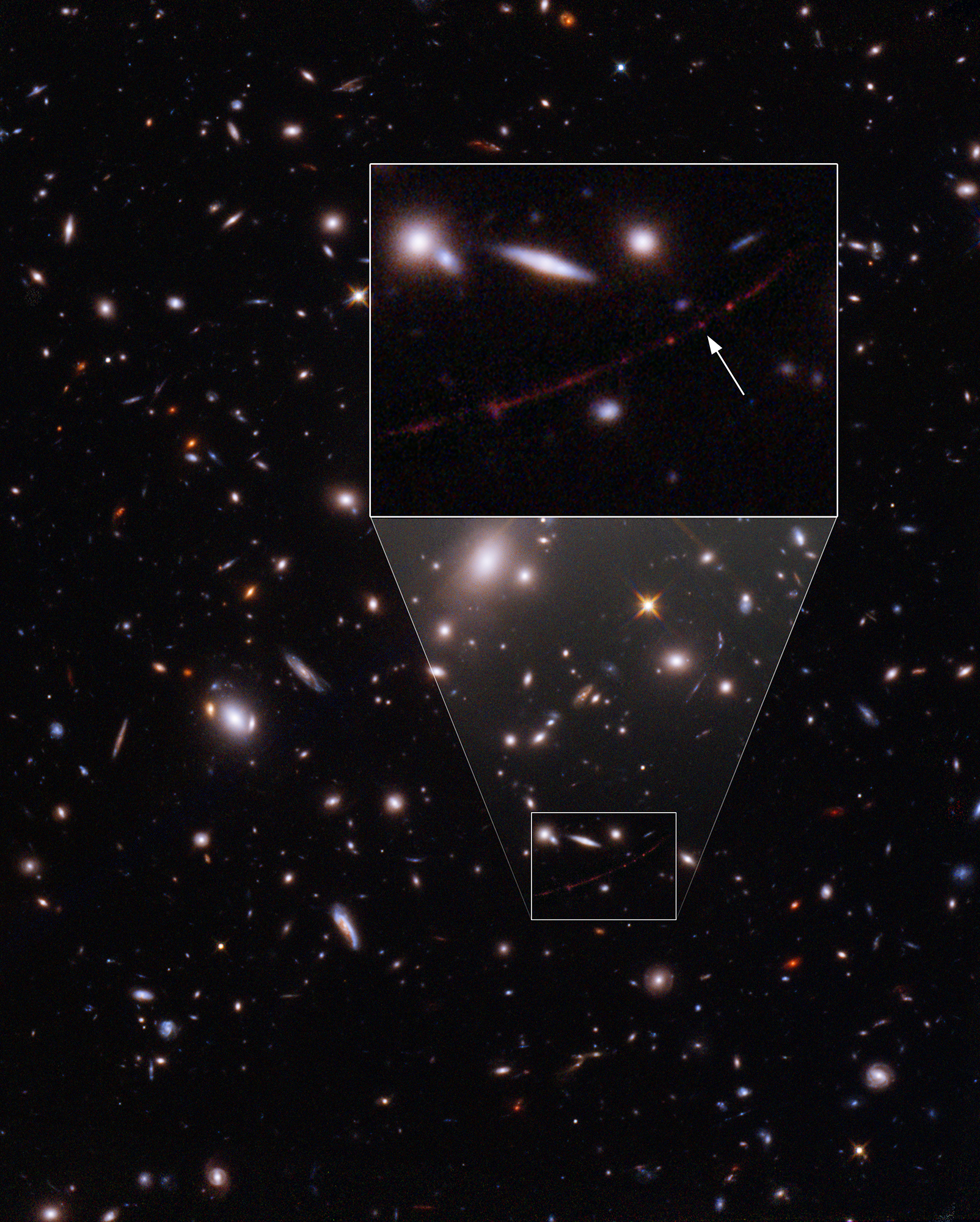
Traveling Back in Time: 13.4 billion years
Perhaps some of Hubble’s most legendary observations are its deep field images, which collect light from thousands of galaxies that are billions of light-years away.
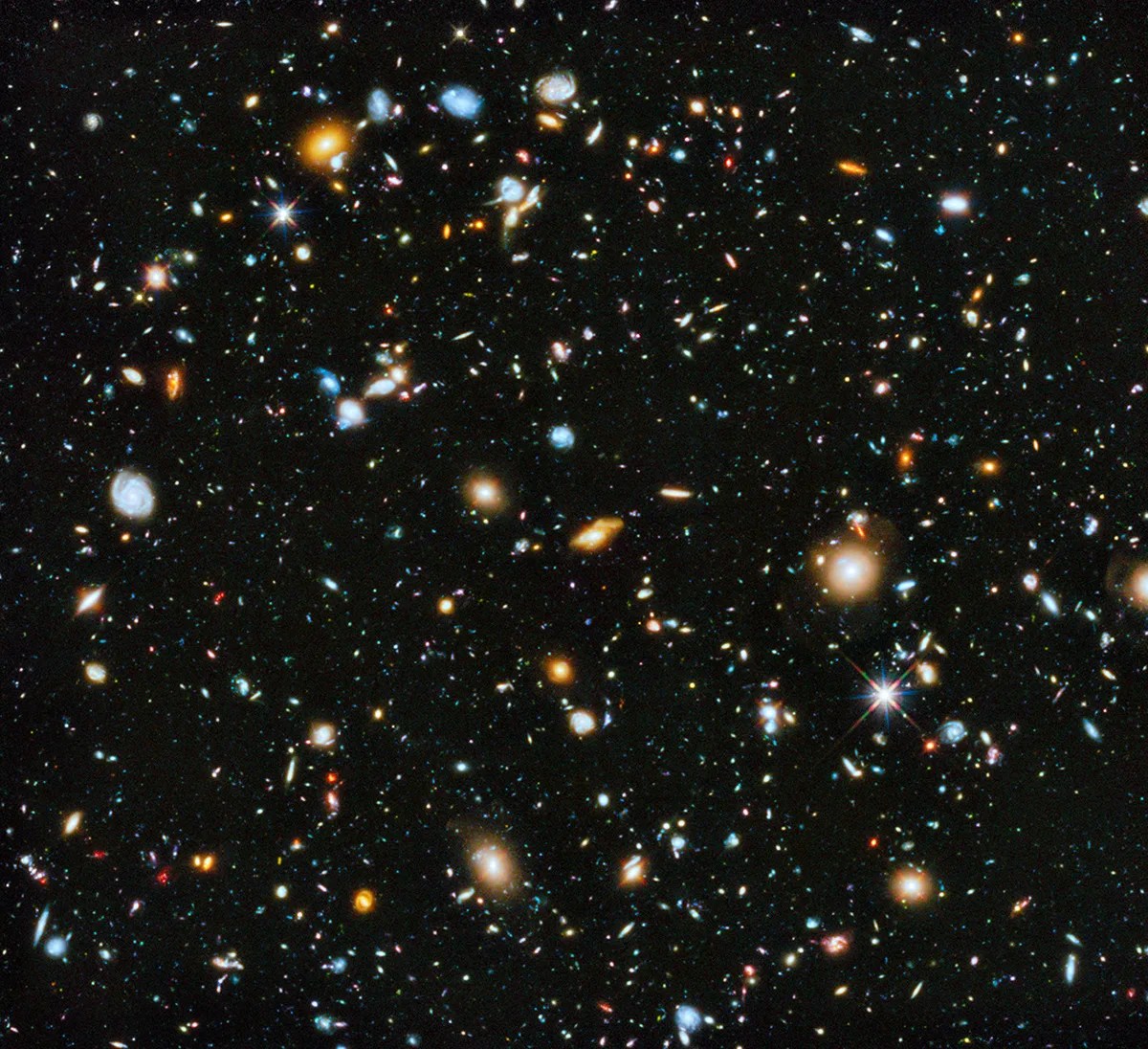
With this type of imagery, we can better understand how our universe changes over time by puzzling out how galaxies evolve. The farther back we look with Hubble, the closer we get to the the big bang, when the universe began – so the most distant galaxies observed by Hubble often appear to us as the “youngest” ones – giving us a sneak peek at the universe in its infancy. Because these galaxies emitted their light when they were young, we get to witness them in their early stages. These early galaxies often appear simpler and smaller than the grandiose spiral galaxies and merged galaxies we see closer to us in distance, and therefore in time. These young galaxies are actually old galaxies now as they have evolved over the time this light has taken to reach us.
Hubble’s farthest observation is of a galaxy named GN-z11, observed as it was 13.4 billion years in the past! This places it within just 400 million years of the big bang itself.
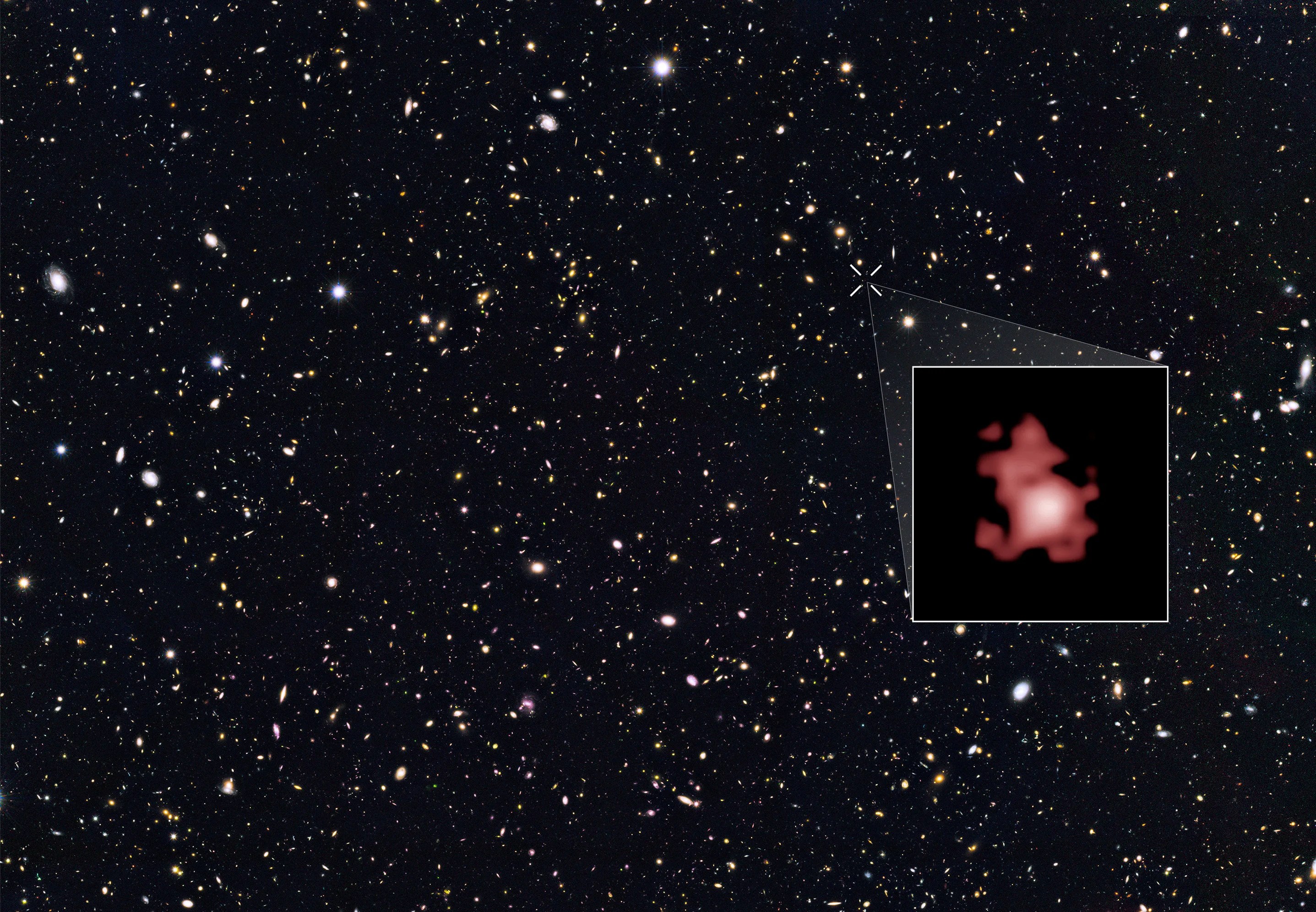
Watching Our Universe Over Time
Observations of the most distant objects, like GN-z11 and Earendel, give astronomers exciting insight into the environment of our early universe. The light we see literally traveled from all the way back then!
Our universe remains mysterious, mind-bendingly large, and ever-expanding, but by gathering light from near and far – from the recent past to the dawn of the universe itself – Hubble helps answer questions about where we are and how the universe works.
At its core, astronomy is really just archaeology. Cosmic objects give off light, letting us learn more about their lives. It can take a long, long time for light to reach Hubble – just one telescope orbiting just one planet in just one solar system in just one galaxy. Scientists use Hubble like the time machine that it is to piece together the history and mystery of the cosmos, giving us all a glimpse right up to the edge of the universe – and time itself.
Explore More Hubble
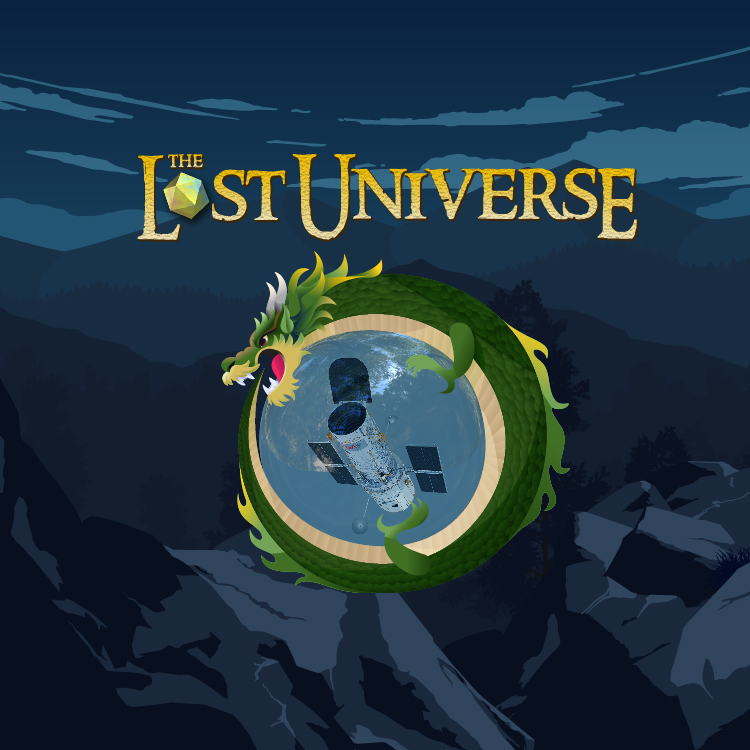
The Lost Universe
NASA's Hubble Space Telescope has vanished from Earth’s timeline. Only an ambitious crew of adventurers can uncover what was lost. Are you up to the challenge?
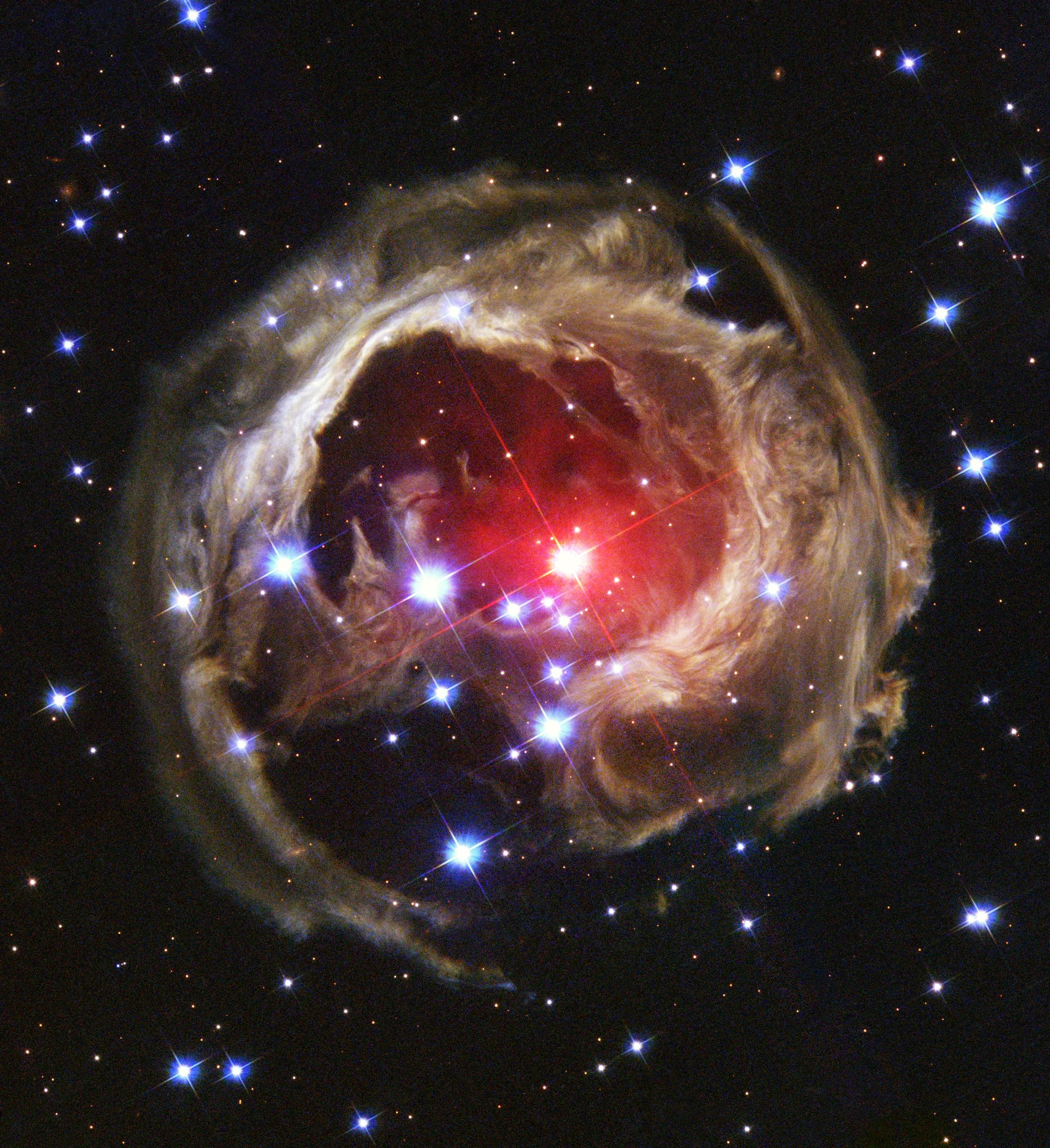
Hubble Science Highlights
Hubble has affected every area of astronomy. Its most notable scientific discoveries reflect the broad range of research and the breakthroughs it has achieved.
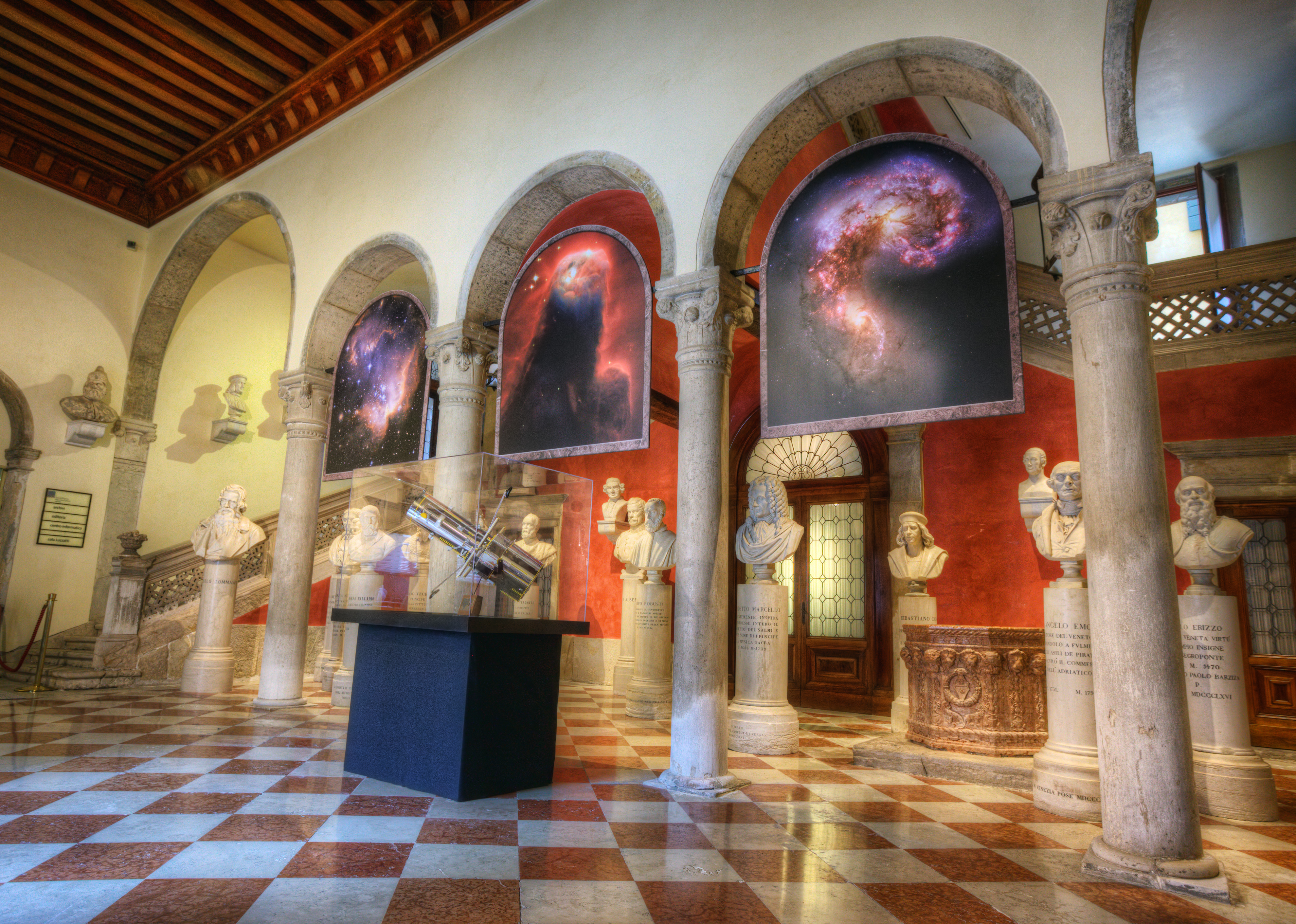
Hubble's Cultural Impact
Even if you don't know anything about the Hubble Space Telescope, its pictures have been a part of your life.
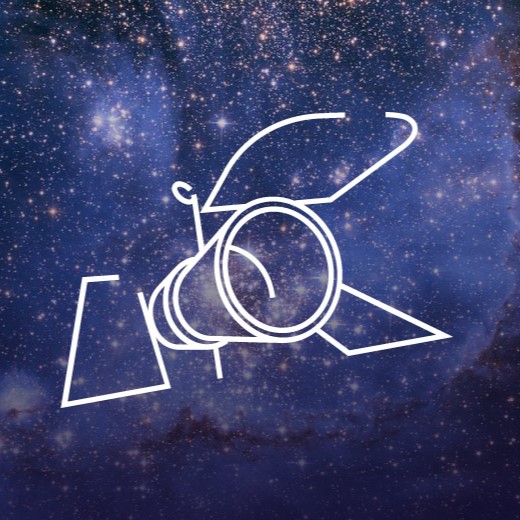
What is Hubble Observing?
See the area of sky Hubble is currently investigating or explore its upcoming and past targets.
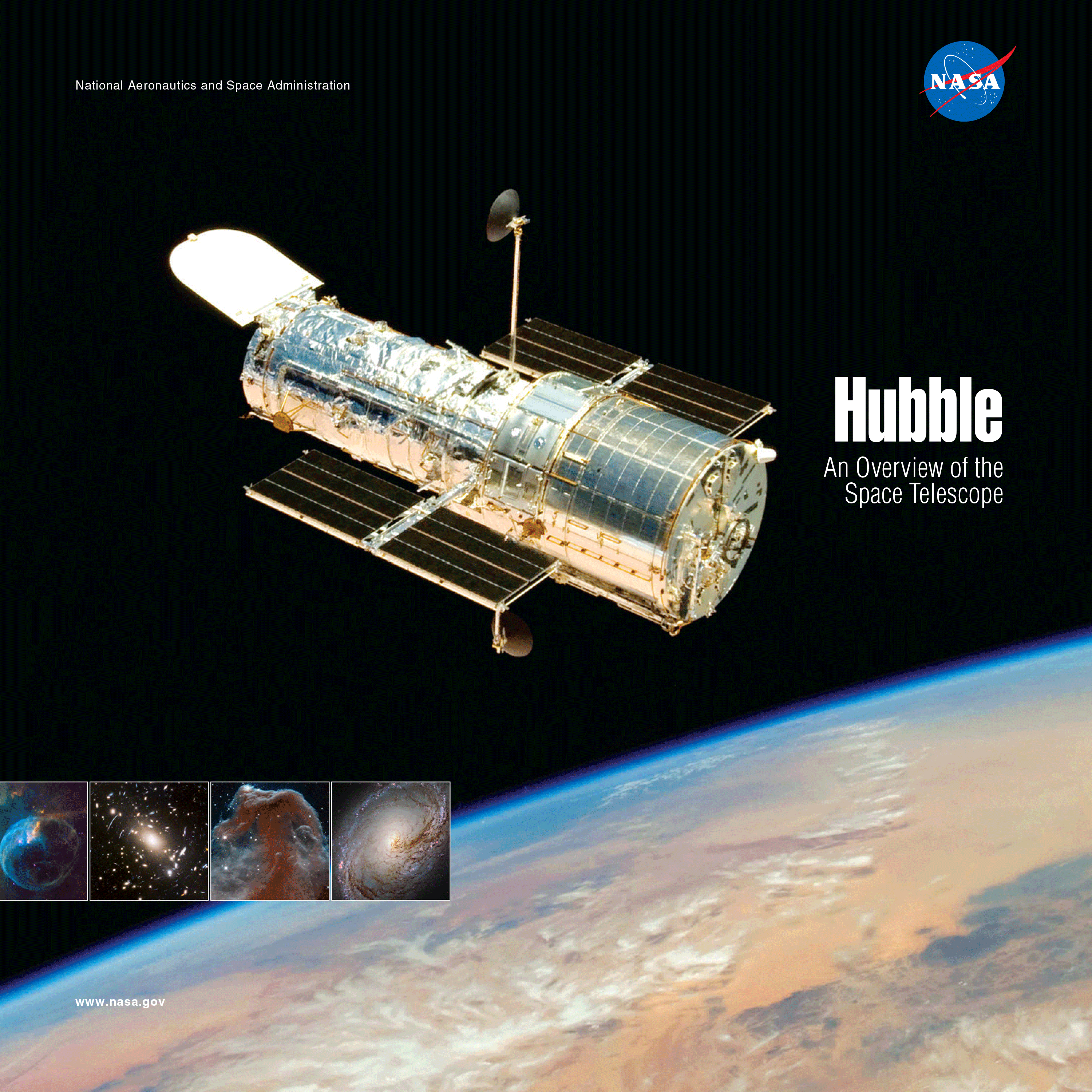
Hubble E-books
Investigate the mysteries of the universe with Hubble. Learn Hubble's history and dive deeper into its discoveries by downloading our e-books.

Chapter 15: Galaxies
Chapter 1 how science works.
- The Scientific Method
- Measurements
- Units and the Metric System
- Measurement Errors
- Mass, Length, and Time
- Observations and Uncertainty
- Precision and Significant Figures
- Errors and Statistics
- Scientific Notation
- Ways of Representing Data
- Mathematics
- Testing a Hypothesis
- Case Study of Life on Mars
- Systems of Knowledge
- The Culture of Science
- Computer Simulations
- Modern Scientific Research
- The Scope of Astronomy
- Astronomy as a Science
- A Scale Model of Space
- A Scale Model of Time
Chapter 2 Early Astronomy
- The Night Sky
- Motions in the Sky
- Constellations and Seasons
- Cause of the Seasons
- The Magnitude System
- Angular Size and Linear Size
- Phases of the Moon
- Dividing Time
- Solar and Lunar Calendars
- History of Astronomy
- Ancient Observatories
- Counting and Measurement
- Greek Astronomy
- Aristotle and Geocentric Cosmology
- Aristarchus and Heliocentric Cosmology
- The Dark Ages
- Arab Astronomy
- Indian Astronomy
- Chinese Astronomy
- Mayan Astronomy
Chapter 3 The Copernican Revolution
- Ptolemy and the Geocentric Model
- The Renaissance
- Copernicus and the Heliocentric Model
- Tycho Brahe
- Johannes Kepler
- Elliptical Orbits
- Kepler's Laws
- Galileo Galilei
- The Trial of Galileo
- Isaac Newton
- Newton's Law of Gravity
- The Plurality of Worlds
- The Birth of Modern Science
- Layout of the Solar System
- Scale of the Solar System
- The Idea of Space Exploration
- History of Space Exploration
- Moon Landings
- International Space Station
- Manned versus Robotic Missions
- Commercial Space Flight
- Future of Space Exploration
- Living in Space
- Moon, Mars, and Beyond
- Societies in Space
Chapter 4 Matter and Energy in the Universe
- Matter and Energy
- Rutherford and Atomic Structure
- Early Greek Physics
- Dalton and Atoms
- The Periodic Table
- Structure of the Atom
- Heat and Temperature
- Potential and Kinetic Energy
- Conservation of Energy
- Velocity of Gas Particles
- States of Matter
- Thermodynamics
- Laws of Thermodynamics
- Heat Transfer
- Thermal Radiation
- Radiation from Planets and Stars
- Internal Heat in Planets and Stars
- Periodic Processes
- Random Processes
Chapter 5 The Earth-Moon System
- Earth and Moon
- Early Estimates of Earth's Age
- How the Earth Cooled
- Ages Using Radioactivity
- Radioactive Half-Life
- Ages of the Earth and Moon
- Geological Activity
- Internal Structure of the Earth and Moon
- Basic Rock Types
- Layers of the Earth and Moon
- Origin of Water on Earth
- The Evolving Earth
- Plate Tectonics
- Geological Processes
- Impact Craters
- The Geological Timescale
- Mass Extinctions
- Evolution and the Cosmic Environment
- Earth's Atmosphere and Oceans
- Weather Circulation
- Environmental Change on Earth
- The Earth-Moon System
- Geological History of the Moon
- Tidal Forces
- Effects of Tidal Forces
- Historical Studies of the Moon
- Lunar Surface
- Ice on the Moon
- Origin of the Moon
- Humans on the Moon
Chapter 6 The Terrestrial Planets
- Studying Other Planets
- The Planets
- The Terrestrial Planets
- Mercury's Orbit
- Mercury's Surface
- Volcanism on Venus
- Venus and the Greenhouse Effect
- Tectonics on Venus
- Exploring Venus
- Mars in Myth and Legend
- Early Studies of Mars
- Mars Close-Up
- Modern Views of Mars
- Missions to Mars
- Geology of Mars
- Water on Mars
- Polar Caps of Mars
- Climate Change on Mars
- Terraforming Mars
- Life on Mars
- The Moons of Mars
- Martian Meteorites
- Comparative Planetology
- Incidence of Craters
- Counting Craters
- Counting Statistics
- Internal Heat and Geological Activity
- Magnetic Fields of the Terrestrial Planets
- Mountains and Rifts
- Radar Studies of Planetary Surfaces
- Laser Ranging and Altimetry
- Gravity and Atmospheres
- Normal Atmospheric Composition
- The Significance of Oxygen
Chapter 7 The Giant Planets and Their Moons
- The Gas Giant Planets
- Atmospheres of the Gas Giant Planets
- Clouds and Weather on Gas Giant Planets
- Internal Structure of the Gas Giant Planets
- Thermal Radiation from Gas Giant Planets
- Life on Gas Giant Planets?
- Why Giant Planets are Giant
- Ring Systems of the Giant Planets
- Structure Within Ring Systems
- The Origin of Ring Particles
- The Roche Limit
- Resonance and Harmonics
- Tidal Forces in the Solar System
- Moons of Gas Giant Planets
- Geology of Large Moons
- The Voyager Missions
- Jupiter's Galilean Moons
- Jupiter's Ganymede
- Jupiter's Europa
- Jupiter's Callisto
- Jupiter's Io
- Volcanoes on Io
- Cassini Mission to Saturn
- Saturn's Titan
- Saturn's Enceladus
- Discovery of Uranus and Neptune
- Uranus' Miranda
- Neptune's Triton
- The Discovery of Pluto
- Pluto as a Dwarf Planet
- Dwarf Planets
Chapter 8 Interplanetary Bodies
- Interplanetary Bodies
- Early Observations of Comets
- Structure of the Comet Nucleus
- Comet Chemistry
- Oort Cloud and Kuiper Belt
- Kuiper Belt
- Comet Orbits
- Life Story of Comets
- The Largest Kuiper Belt Objects
- Meteors and Meteor Showers
- Gravitational Perturbations
- Surveys for Earth Crossing Asteroids
- Asteroid Shapes
- Composition of Asteroids
- Introduction to Meteorites
- Origin of Meteorites
- Types of Meteorites
- The Tunguska Event
- The Threat from Space
- Probability and Impacts
- Impact on Jupiter
- Interplanetary Opportunity
Chapter 9 Planet Formation and Exoplanets
- Formation of the Solar System
- Early History of the Solar System
- Conservation of Angular Momentum
- Angular Momentum in a Collapsing Cloud
- Helmholtz Contraction
- Safronov and Planet Formation
- Collapse of the Solar Nebula
- Why the Solar System Collapsed
- From Planetesimals to Planets
- Accretion and Solar System Bodies
- Differentiation
- Planetary Magnetic Fields
- The Origin of Satellites
- Solar System Debris and Formation
- Gradual Evolution and a Few Catastrophies
- Chaos and Determinism
- Extrasolar Planets
- Discoveries of Exoplanets
- Doppler Detection of Exoplanets
- Transit Detection of Exoplanets
- The Kepler Mission
- Direct Detection of Exoplanets
- Properties of Exoplanets
- Implications of Exoplanet Surveys
- Future Detection of Exoplanets
Chapter 10 Detecting Radiation from Space
- Observing the Universe
- Radiation and the Universe
- The Nature of Light
- The Electromagnetic Spectrum
- Properties of Waves
- Waves and Particles
- How Radiation Travels
- Properties of Electromagnetic Radiation
- The Doppler Effect
- Invisible Radiation
- Thermal Spectra
- The Quantum Theory
- The Uncertainty Principle
- Spectral Lines
- Emission Lines and Bands
- Absorption and Emission Spectra
- Kirchoff's Laws
- Astronomical Detection of Radiation
- The Telescope
- Optical Telescopes
- Optical Detectors
- Adaptive Optics
- Image Processing
- Digital Information
- Radio Telescopes
- Telescopes in Space
- Hubble Space Telescope
- Interferometry
- Collecting Area and Resolution
- Frontier Observatories
Chapter 11 Our Sun: The Nearest Star
- The Nearest Star
- Properties of the Sun
- Kelvin and the Sun's Age
- The Sun's Composition
- Energy From Atomic Nuclei
- Mass-Energy Conversion
- Examples of Mass-Energy Conversion
- Energy From Nuclear Fission
- Energy From Nuclear Fusion
- Nuclear Reactions in the Sun
- The Sun's Interior
- Energy Flow in the Sun
- Collisions and Opacity
- Solar Neutrinos
- Solar Oscillations
- The Sun's Atmosphere
- Solar Chromosphere and Corona
- The Solar Cycle
- The Solar Wind
- Effects of the Sun on the Earth
- Cosmic Energy Sources
Chapter 12 Properties of Stars
- Star Properties
- The Distance to Stars
- Apparent Brightness
- Absolute Brightness
- Measuring Star Distances
- Stellar Parallax
- Spectra of Stars
- Spectral Classification
- Temperature and Spectral Class
- Stellar Composition
- Stellar Motion
- Stellar Luminosity
- The Size of Stars
- Stefan-Boltzmann Law
- Stellar Mass
- Hydrostatic Equilibrium
- Stellar Classification
- The Hertzsprung-Russell Diagram
- Volume and Brightness Selected Samples
- Stars of Different Sizes
- Understanding the Main Sequence
- Stellar Structure
- Stellar Evolution
Chapter 13 Star Birth and Death
- Star Birth and Death
- Understanding Star Birth and Death
- Cosmic Abundance of Elements
- Star Formation
- Molecular Clouds
- Young Stars
- T Tauri Stars
- Mass Limits for Stars
- Brown Dwarfs
- Young Star Clusters
- Cauldron of the Elements
- Main Sequence Stars
- Nuclear Reactions in Main Sequence Stars
- Main Sequence Lifetimes
- Evolved Stars
- Cycles of Star Life and Death
- The Creation of Heavy Elements
- Horizontal Branch and Asymptotic Giant Branch Stars
- Variable Stars
- Magnetic Stars
- Stellar Mass Loss
- White Dwarfs
- Seeing the Death of a Star
- Supernova 1987A
- Neutron Stars and Pulsars
- Special Theory of Relativity
- General Theory of Relativity
- Black Holes
- Properties of Black Holes
Chapter 14 The Milky Way
- The Distribution of Stars in Space
- Stellar Companions
- Binary Star Systems
- Binary and Multiple Stars
- Mass Transfer in Binaries
- Binaries and Stellar Mass
- Nova and Supernova
- Exotic Binary Systems
- Gamma Ray Bursts
- How Multiple Stars Form
- Environments of Stars
- The Interstellar Medium
- Effects of Interstellar Material on Starlight
- Structure of the Interstellar Medium
- Dust Extinction and Reddening
- Groups of Stars
- Open Star Clusters
- Globular Star Clusters
- Distances to Groups of Stars
- Ages of Groups of Stars
- Layout of the Milky Way
- William Herschel
- Isotropy and Anisotropy
- Mapping the Milky Way
Chapter 15 Galaxies
- The Milky Way Galaxy
- Mapping the Galaxy Disk
- Spiral Structure in Galaxies
- Mass of the Milky Way
- Dark Matter in the Milky Way
- Galaxy Mass
- The Galactic Center
- Black Hole in the Galactic Center
- Stellar Populations
- Formation of the Milky Way
- The Shapley-Curtis Debate
- Edwin Hubble
- Distances to Galaxies
- Classifying Galaxies
- Spiral Galaxies
- Elliptical Galaxies
- Lenticular Galaxies
- Dwarf and Irregular Galaxies
- Overview of Galaxy Structures
- The Local Group
Light Travel Time
- Galaxy Size and Luminosity
- Mass to Light Ratios
- Dark Matter in Galaxies
- Gravity of Many Bodies
- Galaxy Evolution
- Galaxy Interactions
- Galaxy Formation
Chapter 16 The Expanding Universe
- Galaxy Redshifts
- The Expanding Universe
- Cosmological Redshifts
- The Hubble Relation
- Relating Redshift and Distance
- Galaxy Distance Indicators
- Size and Age of the Universe
- The Hubble Constant
- Large Scale Structure
- Galaxy Clustering
- Clusters of Galaxies
- Overview of Large Scale Structure
- Dark Matter on the Largest Scales
- The Most Distant Galaxies
- Black Holes in Nearby Galaxies
- Active Galaxies
- Radio Galaxies
- The Discovery of Quasars
- Types of Gravitational Lensing
- Properties of Quasars
- The Quasar Power Source
- Quasars as Probes of the Universe
- Star Formation History of the Universe
- Expansion History of the Universe
Chapter 17 Cosmology
- Early Cosmologies
- Relativity and Cosmology
- The Big Bang Model
- The Cosmological Principle
- Universal Expansion
- Cosmic Nucleosynthesis
- Cosmic Microwave Background Radiation
- Discovery of the Microwave Background Radiation
- Measuring Space Curvature
- Cosmic Evolution
- Evolution of Structure
- Mean Cosmic Density
- Critical Density
- Dark Matter and Dark Energy
- Age of the Universe
- Precision Cosmology
- The Future of the Contents of the Universe
- Fate of the Universe
- Alternatives to the Big Bang Model
- Particles and Radiation
- The Very Early Universe
- Mass and Energy in the Early Universe
- Matter and Antimatter
- The Forces of Nature
- Fine-Tuning in Cosmology
- The Anthropic Principle in Cosmology
- String Theory and Cosmology
- The Multiverse
- The Limits of Knowledge
Chapter 18 Life On Earth
- Nature of Life
- Chemistry of Life
- Molecules of Life
- The Origin of Life on Earth
- Origin of Complex Molecules
- Miller-Urey Experiment
- Pre-RNA World
- From Molecules to Cells
- Extremophiles
- Thermophiles
- Psychrophiles
- Acidophiles
- Alkaliphiles
- Radiation Resistant Biology
- Importance of Water for Life
- Hydrothermal Systems
- Silicon Versus Carbon
- DNA and Heredity
- Life as Digital Information
- Synthetic Biology
- Life in a Computer
- Natural Selection
- Tree Of Life
- Evolution and Intelligence
- Culture and Technology
- The Gaia Hypothesis
- Life and the Cosmic Environment
Chapter 19 Life in the Universe
- Life in the Universe
- Astrobiology
- Life Beyond Earth
- Sites for Life
- Complex Molecules in Space
- Life in the Solar System
- Lowell and Canals on Mars
- Implications of Life on Mars
- Extreme Environments in the Solar System
- Rare Earth Hypothesis
- Are We Alone?
- Unidentified Flying Objects or UFOs
- The Search for Extraterrestrial Intelligence
- The Drake Equation
- The History of SETI
- Recent SETI Projects
- Recognizing a Message
- The Best Way to Communicate
- The Fermi Question
- The Anthropic Principle
- Where Are They?
In the everyday world, as perceived by the human senses, light seems to travel instantaneously from one place to another. In fact, the speed of light is not infinite, and light doesn't instantly jump from your ceiling light to your desk and then to your eye. We perceive light as moving instantly because its actual velocity is almost unimaginably high; light travels at 300,000 km/s, denoted c. Using the equation Rate × Time = Distance, you can divide any distance by this number to figure out the time it would take light to cross that distance. In this way, we can see that light takes 1.5 × 10 8 / 3 × 10 5 = 500 seconds to reach Earth from the Sun, or just over 8 minutes. It takes light about 40 times longer ( Pluto at a distance of 39.4 A.U.) to leave the Solar System or about 5 hours.
The speed of light is a built-in quality of our universe . All evidence to date indicates that light has always traveled at this speed, that the speed is exact, and that the same speed is observed for all observers. The vast size of the universe, coupled with the finite (albeit large) speed of light, means that as we look out in space, we look back in time. Distant light is old light.
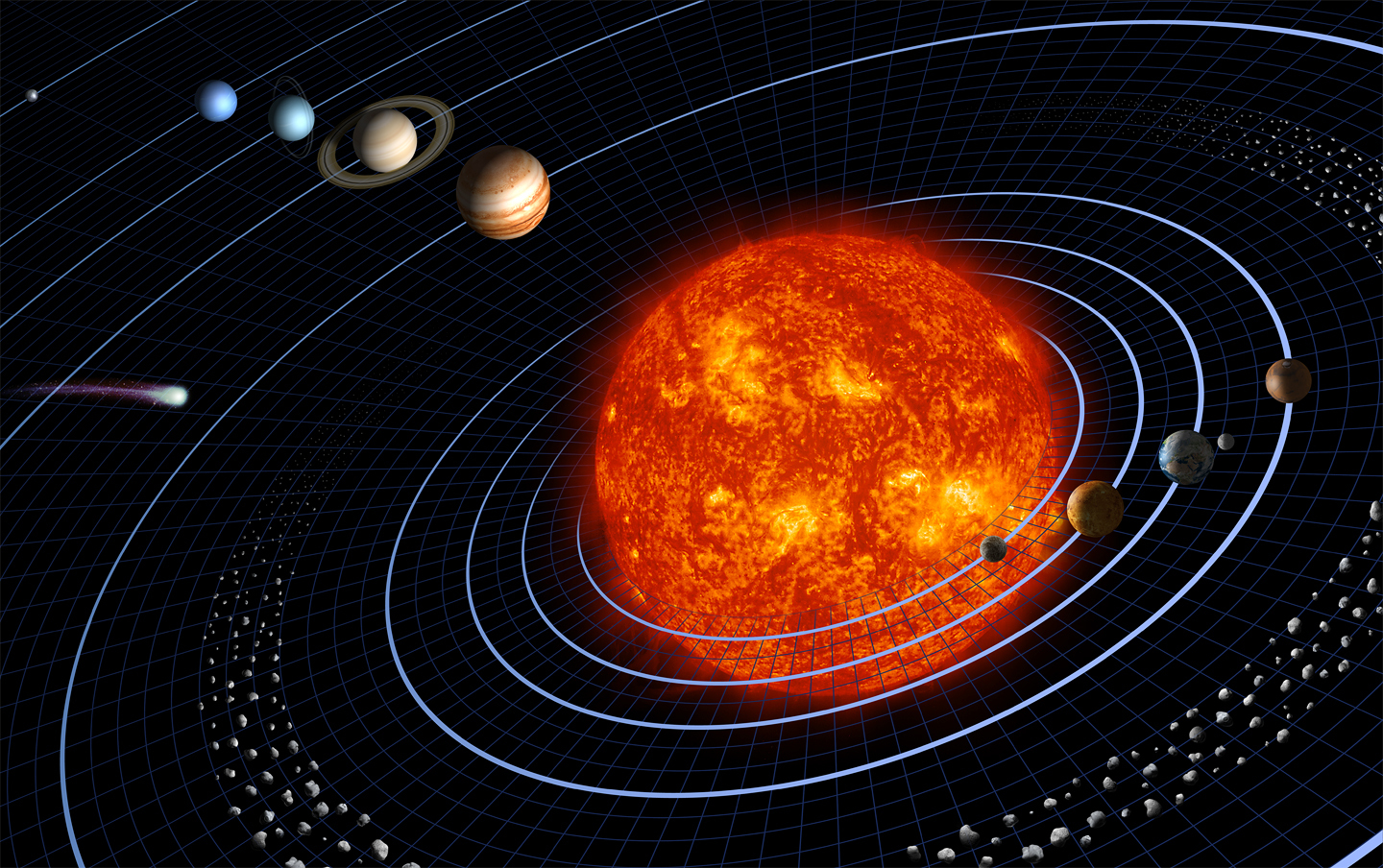
The 5 hours it takes light to travel across our Solar System may seem like a short period to cross such a large distance, but we have to think about scale. While distances within the Solar System are large to us, they are dwarfed by the distances between the stars. Considering larger regions of the Milky Way, a natural distance unit is the distance light travels in one year. This is called a light year. We can easily calculate the size of this unit by remembering that distance has the units of velocity times time. So:
D ly = vt = c x 1 year = 3 × 10 5 x (3600 × 24 × 365) = 9.5 × 10 12 km

A light year is the typical distance between stars in the neighborhood of the Sun. It is nearly 10 trillion kilometers or 6 trillion miles! The fundamental unit of distance defined by geometry is the 13 km; defined as the distance corresponding to a parallax of 1 second of arc.">parsec , equal to 3.1 × 10 13 km. This is described in more detail in the article on parallax . Geometrically, one parsec is the height of a right triangle with an angle of 1 arcsec describing its apex , and a distance of 1 AU describing its base. The units are related by a small numerical constant D ly = 3.26 D pc . So to roughly convert from parsecs to light years, multiply by 3.3.
The following list gives the distance to various points within the Milky Way and beyond, both in terms of parsecs and the light travel time in years (which is also the distance in light years or 3.3 times the distance in parsecs). To fully appreciate how isolated we are in space, remember that light is the fastest thing we know of. The fastest spacecraft can not reach 1% of the speed of light. So you would have to multiply the numbers on the right-hand side of the table by at least 100 to estimate how long it would take to send a probe through the Milky Way and into the Local Group with current technology.
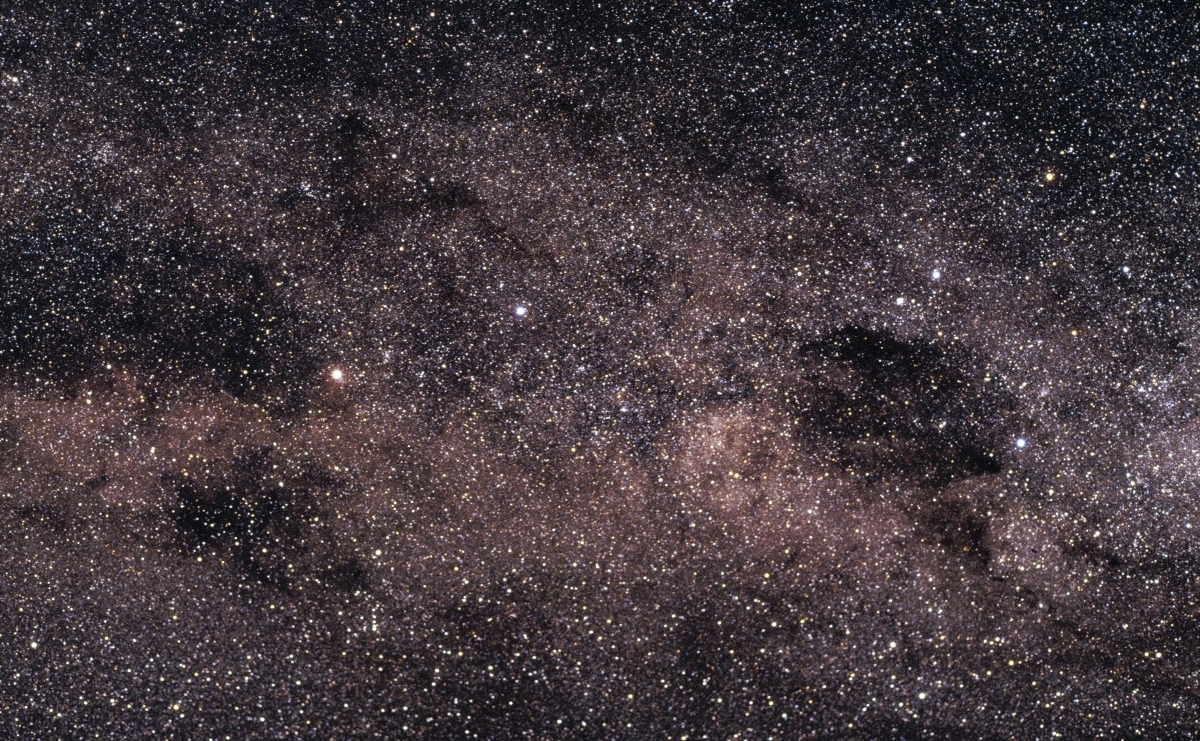
• Nearest star (α Centauri) - 1.3 pc, 4.2 years • Sirius - 2.7 pc, 8.8 years • Vega - 8.1 pc, 26 years • Hyades cluster - 42 pc, 134 years • Pleiades cluster - 125 pc, 411 years • Orion nebula - 460 pc, 1500 years • Nearest spiral arm - 1200 pc, 3900 years • Center of the 8 to 10 13 solar masses.">galaxy - 8500 pc, 29,000 years • Far edge of the galaxy - 24,000 pc, 78,000 years • Large Magellanic Cloud - 50,000 pc, 163,000 years • Andromeda galaxy (M31) - 670,000 pc, 2.2 million years
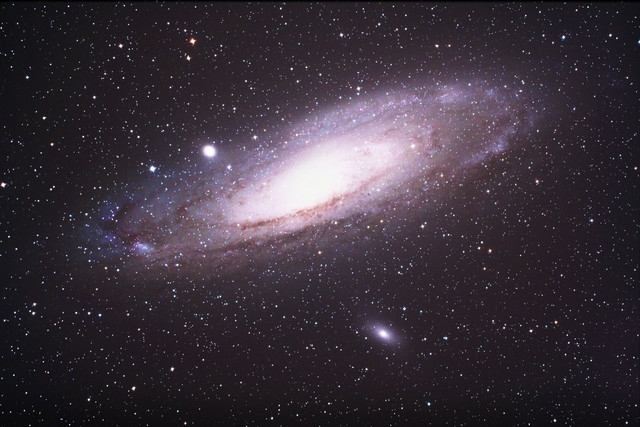
What does Andromeda look like now? Nobody knows. Since nothing travels faster than light (and this applies to all the colors of light across the electromagnetic spectrum ), there is no quicker way to send information from one place to another. We are stuck with collecting and measuring "old" light. While this seems like a limitation, scientists actually find that it turns out that light travel time is a wonderful tool. By looking further out in space we look further back in time. In this way, astronomers get to explore the earlier stages of the universe seeing firsthand (with a delay) what the early universe looked like.

Is time travel even possible? An astrophysicist explains the science behind the science fiction
Assistant Professor of Astronomy and Astrophysics, University of Maryland, Baltimore County
Disclosure statement
Adi Foord does not work for, consult, own shares in or receive funding from any company or organisation that would benefit from this article, and has disclosed no relevant affiliations beyond their academic appointment.
University of Maryland, Baltimore County provides funding as a member of The Conversation US.
View all partners

Curious Kids is a series for children of all ages. If you have a question you’d like an expert to answer, send it to [email protected] .
Will it ever be possible for time travel to occur? – Alana C., age 12, Queens, New York
Have you ever dreamed of traveling through time, like characters do in science fiction movies? For centuries, the concept of time travel has captivated people’s imaginations. Time travel is the concept of moving between different points in time, just like you move between different places. In movies, you might have seen characters using special machines, magical devices or even hopping into a futuristic car to travel backward or forward in time.
But is this just a fun idea for movies, or could it really happen?
The question of whether time is reversible remains one of the biggest unresolved questions in science. If the universe follows the laws of thermodynamics , it may not be possible. The second law of thermodynamics states that things in the universe can either remain the same or become more disordered over time.
It’s a bit like saying you can’t unscramble eggs once they’ve been cooked. According to this law, the universe can never go back exactly to how it was before. Time can only go forward, like a one-way street.
Time is relative
However, physicist Albert Einstein’s theory of special relativity suggests that time passes at different rates for different people. Someone speeding along on a spaceship moving close to the speed of light – 671 million miles per hour! – will experience time slower than a person on Earth.
People have yet to build spaceships that can move at speeds anywhere near as fast as light, but astronauts who visit the International Space Station orbit around the Earth at speeds close to 17,500 mph. Astronaut Scott Kelly has spent 520 days at the International Space Station, and as a result has aged a little more slowly than his twin brother – and fellow astronaut – Mark Kelly. Scott used to be 6 minutes younger than his twin brother. Now, because Scott was traveling so much faster than Mark and for so many days, he is 6 minutes and 5 milliseconds younger .
Some scientists are exploring other ideas that could theoretically allow time travel. One concept involves wormholes , or hypothetical tunnels in space that could create shortcuts for journeys across the universe. If someone could build a wormhole and then figure out a way to move one end at close to the speed of light – like the hypothetical spaceship mentioned above – the moving end would age more slowly than the stationary end. Someone who entered the moving end and exited the wormhole through the stationary end would come out in their past.
However, wormholes remain theoretical: Scientists have yet to spot one. It also looks like it would be incredibly challenging to send humans through a wormhole space tunnel.
Paradoxes and failed dinner parties
There are also paradoxes associated with time travel. The famous “ grandfather paradox ” is a hypothetical problem that could arise if someone traveled back in time and accidentally prevented their grandparents from meeting. This would create a paradox where you were never born, which raises the question: How could you have traveled back in time in the first place? It’s a mind-boggling puzzle that adds to the mystery of time travel.
Famously, physicist Stephen Hawking tested the possibility of time travel by throwing a dinner party where invitations noting the date, time and coordinates were not sent out until after it had happened. His hope was that his invitation would be read by someone living in the future, who had capabilities to travel back in time. But no one showed up.
As he pointed out : “The best evidence we have that time travel is not possible, and never will be, is that we have not been invaded by hordes of tourists from the future.”
Telescopes are time machines
Interestingly, astrophysicists armed with powerful telescopes possess a unique form of time travel. As they peer into the vast expanse of the cosmos, they gaze into the past universe. Light from all galaxies and stars takes time to travel, and these beams of light carry information from the distant past. When astrophysicists observe a star or a galaxy through a telescope, they are not seeing it as it is in the present, but as it existed when the light began its journey to Earth millions to billions of years ago.
NASA’s newest space telescope, the James Webb Space Telescope , is peering at galaxies that were formed at the very beginning of the Big Bang, about 13.7 billion years ago.
While we aren’t likely to have time machines like the ones in movies anytime soon, scientists are actively researching and exploring new ideas. But for now, we’ll have to enjoy the idea of time travel in our favorite books, movies and dreams.
Hello, curious kids! Do you have a question you’d like an expert to answer? Ask an adult to send your question to [email protected] . Please tell us your name, age and the city where you live.
And since curiosity has no age limit – adults, let us know what you’re wondering, too. We won’t be able to answer every question, but we will do our best.
- Time travel
- Special Relativity
- Thermodynamics
- Stephen Hawking
- Curious Kids
- Curious Kids US
- Time travel paradox

Lecturer (Hindi-Urdu)

Initiative Tech Lead, Digital Products COE

Director, Defence and Security

Opportunities with the new CIEHF

School of Social Sciences – Public Policy and International Relations opportunities
A beginner's guide to time travel
Learn exactly how Einstein's theory of relativity works, and discover how there's nothing in science that says time travel is impossible.

Everyone can travel in time . You do it whether you want to or not, at a steady rate of one second per second. You may think there's no similarity to traveling in one of the three spatial dimensions at, say, one foot per second. But according to Einstein 's theory of relativity , we live in a four-dimensional continuum — space-time — in which space and time are interchangeable.
Einstein found that the faster you move through space, the slower you move through time — you age more slowly, in other words. One of the key ideas in relativity is that nothing can travel faster than the speed of light — about 186,000 miles per second (300,000 kilometers per second), or one light-year per year). But you can get very close to it. If a spaceship were to fly at 99% of the speed of light, you'd see it travel a light-year of distance in just over a year of time.
That's obvious enough, but now comes the weird part. For astronauts onboard that spaceship, the journey would take a mere seven weeks. It's a consequence of relativity called time dilation , and in effect, it means the astronauts have jumped about 10 months into the future.
Traveling at high speed isn't the only way to produce time dilation. Einstein showed that gravitational fields produce a similar effect — even the relatively weak field here on the surface of Earth . We don't notice it, because we spend all our lives here, but more than 12,400 miles (20,000 kilometers) higher up gravity is measurably weaker— and time passes more quickly, by about 45 microseconds per day. That's more significant than you might think, because it's the altitude at which GPS satellites orbit Earth, and their clocks need to be precisely synchronized with ground-based ones for the system to work properly.
The satellites have to compensate for time dilation effects due both to their higher altitude and their faster speed. So whenever you use the GPS feature on your smartphone or your car's satnav, there's a tiny element of time travel involved. You and the satellites are traveling into the future at very slightly different rates.

But for more dramatic effects, we need to look at much stronger gravitational fields, such as those around black holes , which can distort space-time so much that it folds back on itself. The result is a so-called wormhole, a concept that's familiar from sci-fi movies, but actually originates in Einstein's theory of relativity. In effect, a wormhole is a shortcut from one point in space-time to another. You enter one black hole, and emerge from another one somewhere else. Unfortunately, it's not as practical a means of transport as Hollywood makes it look. That's because the black hole's gravity would tear you to pieces as you approached it, but it really is possible in theory. And because we're talking about space-time, not just space, the wormhole's exit could be at an earlier time than its entrance; that means you would end up in the past rather than the future.
Trajectories in space-time that loop back into the past are given the technical name "closed timelike curves." If you search through serious academic journals, you'll find plenty of references to them — far more than you'll find to "time travel." But in effect, that's exactly what closed timelike curves are all about — time travel

This article is brought to you by How It Works .
How It Works is the action-packed magazine that's bursting with exciting information about the latest advances in science and technology, featuring everything you need to know about how the world around you — and the universe — works.
There's another way to produce a closed timelike curve that doesn't involve anything quite so exotic as a black hole or wormhole: You just need a simple rotating cylinder made of super-dense material. This so-called Tipler cylinder is the closest that real-world physics can get to an actual, genuine time machine. But it will likely never be built in the real world, so like a wormhole, it's more of an academic curiosity than a viable engineering design.
Yet as far-fetched as these things are in practical terms, there's no fundamental scientific reason — that we currently know of — that says they are impossible. That's a thought-provoking situation, because as the physicist Michio Kaku is fond of saying, "Everything not forbidden is compulsory" (borrowed from T.H. White's novel, "The Once And Future King"). He doesn't mean time travel has to happen everywhere all the time, but Kaku is suggesting that the universe is so vast it ought to happen somewhere at least occasionally. Maybe some super-advanced civilization in another galaxy knows how to build a working time machine, or perhaps closed timelike curves can even occur naturally under certain rare conditions.

This raises problems of a different kind — not in science or engineering, but in basic logic. If time travel is allowed by the laws of physics, then it's possible to envision a whole range of paradoxical scenarios . Some of these appear so illogical that it's difficult to imagine that they could ever occur. But if they can't, what's stopping them?
Thoughts like these prompted Stephen Hawking , who was always skeptical about the idea of time travel into the past, to come up with his "chronology protection conjecture" — the notion that some as-yet-unknown law of physics prevents closed timelike curves from happening. But that conjecture is only an educated guess, and until it is supported by hard evidence, we can come to only one conclusion: Time travel is possible.
A party for time travelers
Hawking was skeptical about the feasibility of time travel into the past, not because he had disproved it, but because he was bothered by the logical paradoxes it created. In his chronology protection conjecture, he surmised that physicists would eventually discover a flaw in the theory of closed timelike curves that made them impossible.
In 2009, he came up with an amusing way to test this conjecture. Hawking held a champagne party (shown in his Discovery Channel program), but he only advertised it after it had happened. His reasoning was that, if time machines eventually become practical, someone in the future might read about the party and travel back to attend it. But no one did — Hawking sat through the whole evening on his own. This doesn't prove time travel is impossible, but it does suggest that it never becomes a commonplace occurrence here on Earth.
The arrow of time
One of the distinctive things about time is that it has a direction — from past to future. A cup of hot coffee left at room temperature always cools down; it never heats up. Your cellphone loses battery charge when you use it; it never gains charge. These are examples of entropy , essentially a measure of the amount of "useless" as opposed to "useful" energy. The entropy of a closed system always increases, and it's the key factor determining the arrow of time.
It turns out that entropy is the only thing that makes a distinction between past and future. In other branches of physics, like relativity or quantum theory, time doesn't have a preferred direction. No one knows where time's arrow comes from. It may be that it only applies to large, complex systems, in which case subatomic particles may not experience the arrow of time.
Time travel paradox
If it's possible to travel back into the past — even theoretically — it raises a number of brain-twisting paradoxes — such as the grandfather paradox — that even scientists and philosophers find extremely perplexing.
Killing Hitler
A time traveler might decide to go back and kill him in his infancy. If they succeeded, future history books wouldn't even mention Hitler — so what motivation would the time traveler have for going back in time and killing him?
Killing your grandfather
Instead of killing a young Hitler, you might, by accident, kill one of your own ancestors when they were very young. But then you would never be born, so you couldn't travel back in time to kill them, so you would be born after all, and so on …
A closed loop
Suppose the plans for a time machine suddenly appear from thin air on your desk. You spend a few days building it, then use it to send the plans back to your earlier self. But where did those plans originate? Nowhere — they are just looping round and round in time.
Sign up for the Live Science daily newsletter now
Get the world’s most fascinating discoveries delivered straight to your inbox.

How It Works has a special formula for making learning fun by answering questions on science, space, history, technology, transport and the environment with engaging articles, in-depth special features, global science news, and topical interviews. With impressive cutaway illustrations that show how things function, and mindblowing photography of the planet’s most inspiring spectacles, How It Works represents the pinnacle of engaging, factual fun for a mainstream audience keen to keep up with the latest tech and the most impressive phenomena on the planet and beyond. Written and presented in a style that makes even the most complex subjects interesting and easy to understand, How It Works is enjoyed by readers of all ages.
Get fantastic offers by subscribing to the digital and/or print edition now. Subscribers get 13 issues per year!
See photos of NASA's suitcase-sized rovers that will soon map the moon's surface
Why NASA is launching 3 rockets into the solar eclipse next week
Mpox cases are far outpacing last year's numbers, CDC reports
Most Popular
By Anna Gora December 27, 2023
By Anna Gora December 26, 2023
By Anna Gora December 25, 2023
By Emily Cooke December 23, 2023
By Victoria Atkinson December 22, 2023
By Anna Gora December 16, 2023
By Anna Gora December 15, 2023
By Anna Gora November 09, 2023
By Donavyn Coffey November 06, 2023
By Anna Gora October 31, 2023
By Anna Gora October 26, 2023
- 2 'You could almost see and smell their world': Remnants of 'Britain's Pompeii' reveal details of life in Bronze Age village
- 3 Where does the solar system end?
- 4 Chemicals that make babies smell sweet and teens smell 'goat-like' revealed
- 5 'You probably didn't inherit any DNA from Charlemagne': What it means when your DNA 'matches' a historic person's
- 2 James Webb telescope confirms there is something seriously wrong with our understanding of the universe
- 3 How much does Earth weigh?
- 4 'You probably didn't inherit any DNA from Charlemagne': What it means when your DNA 'matches' a historic person's

- school Campus Bookshelves
- menu_book Bookshelves
- perm_media Learning Objects
- login Login
- how_to_reg Request Instructor Account
- hub Instructor Commons
- Download Page (PDF)
- Download Full Book (PDF)
- Periodic Table
- Physics Constants
- Scientific Calculator
- Reference & Cite
- Tools expand_more
- Readability
selected template will load here
This action is not available.

1.5: Consequences of Light Travel Time
- Last updated
- Save as PDF
- Page ID 3613

There is another reason the speed of light is such a natural unit of distance for astronomers. Information about the universe comes to us almost exclusively through various forms of light, and all such light travels at the speed of light—that is, 1 light-year every year. This sets a limit on how quickly we can learn about events in the universe. If a star is 100 light-years away, the light we see from it tonight left that star 100 years ago and is just now arriving in our neighborhood. The soonest we can learn about any changes in that star is 100 years after the fact. For a star 500 light-years away, the light we detect tonight left 500 years ago and is carrying 500-year-old news.
Because many of us are accustomed to instant news from the Internet, some might find this frustrating.
“You mean, when I see that star up there,” you ask, “I won’t know what’s actually happening there for another 500 years?”
But this isn’t the most helpful way to think about the situation. For astronomers, now is when the light reaches us here on Earth. There is no way for us to know anything about that star (or other object) until its light reaches us. But what at first may seem a great frustration is actually a tremendous benefit in disguise. If astronomers really want to piece together what has happened in the universe since its beginning, they must find evidence about each epoch (or period of time) of the past. Where can we find evidence today about cosmic events that occurred billions of years ago?
The delay in the arrival of light provides an answer to this question. The farther out in space we look, the longer the light has taken to get here, and the longer ago it left its place of origin. By looking billions of light-years out into space, astronomers are actually seeing billions of years into the past. In this way, we can reconstruct the history of the cosmos and get a sense of how it has evolved over time.
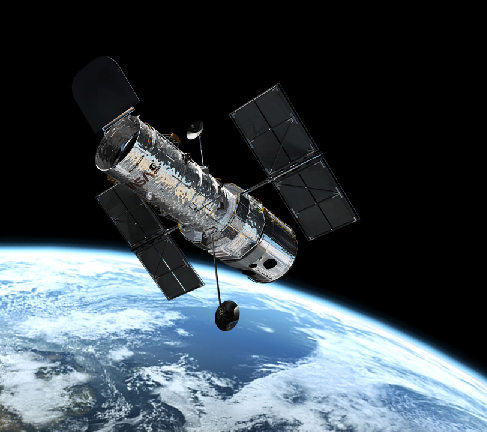
This is one reason why astronomers strive to build telescopes that can collect more and more of the faint light in the universe. The more light we collect, the fainter the objects we can observe. On average, fainter objects are farther away and can, therefore, tell us about periods of time even deeper in the past. Instruments such as the Hubble Space Telescope (Figure \(\PageIndex{1}\)) and the Very Large Telescope in Chile (which you will learn about in the chapter on Astronomical Instruments), are giving astronomers views of deep space and deep time better than any we have had before.

Suggested Searches
- Climate Change
- Expedition 64
- Mars perseverance
- SpaceX Crew-2
- International Space Station
- View All Topics A-Z
Humans in Space
Earth & climate, the solar system, the universe, aeronautics, learning resources, news & events.
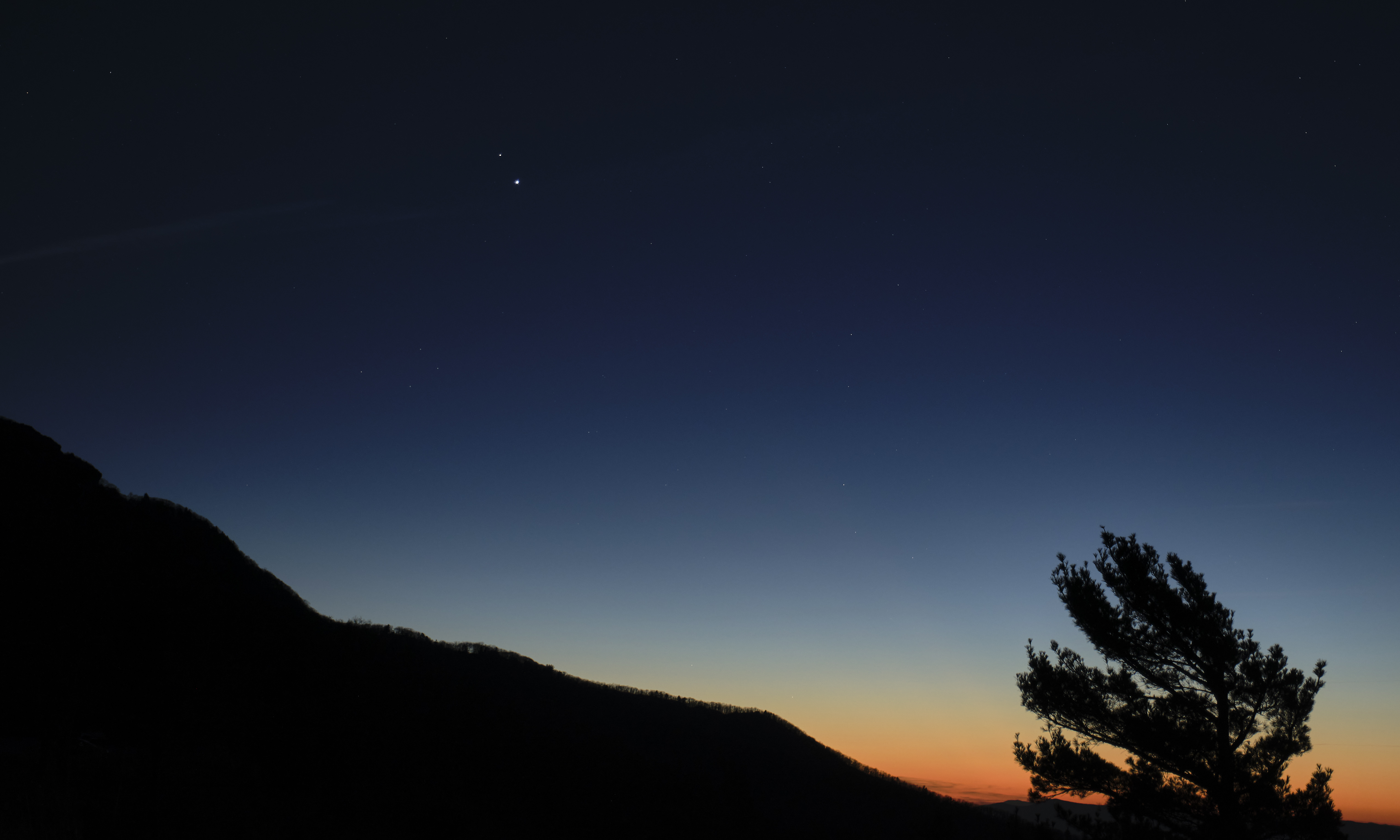
What’s Up: April 2024 Skywatching Tips from NASA
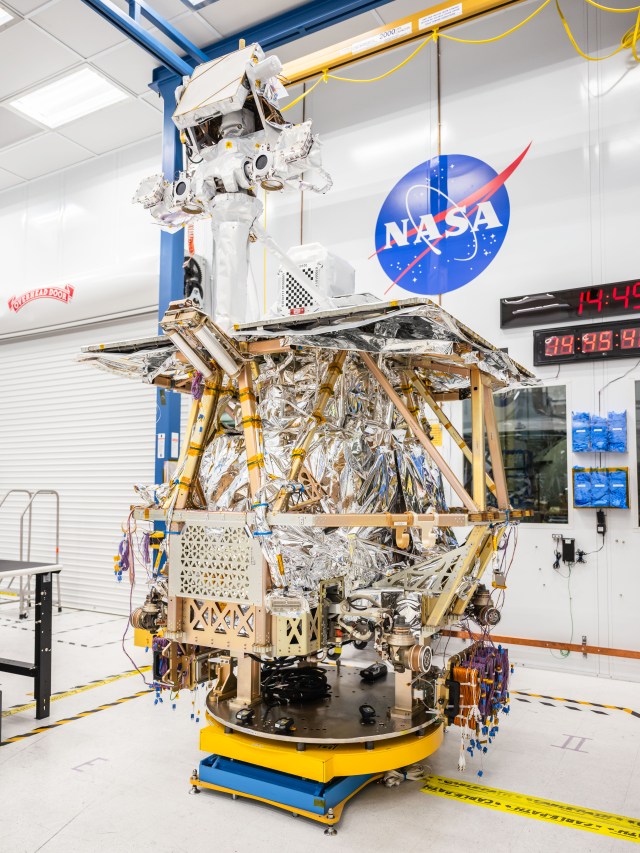
NASA VIPER Robotic Moon Rover Team Raises Its Mighty Mast
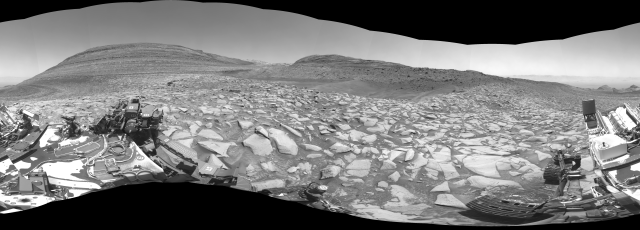
NASA’s Curiosity Searches for New Clues About Mars’ Ancient Water
- Search All NASA Missions
- A to Z List of Missions
- Upcoming Launches and Landings
- Spaceships and Rockets
- Communicating with Missions
- James Webb Space Telescope
- Hubble Space Telescope
- Why Go to Space
- Astronauts Home
- Commercial Space
- Destinations
- Living in Space
- Explore Earth Science
- Earth, Our Planet
- Earth Science in Action
- Earth Multimedia
- Earth Science Researchers
- Pluto & Dwarf Planets
- Asteroids, Comets & Meteors
- The Kuiper Belt
- The Oort Cloud
- Skywatching
- The Search for Life in the Universe
- Black Holes
- The Big Bang
- Dark Energy & Dark Matter
- Earth Science
- Planetary Science
- Astrophysics & Space Science
- The Sun & Heliophysics
- Biological & Physical Sciences
- Lunar Science
- Citizen Science
- Astromaterials
- Aeronautics Research
- Human Space Travel Research
- Science in the Air
- NASA Aircraft
- Flight Innovation
- Supersonic Flight
- Air Traffic Solutions
- Green Aviation Tech
- Drones & You
- Technology Transfer & Spinoffs
- Space Travel Technology
- Technology Living in Space
- Manufacturing and Materials
- Science Instruments
- For Kids and Students
- For Educators
- For Colleges and Universities
- For Professionals
- Science for Everyone
- Requests for Exhibits, Artifacts, or Speakers
- STEM Engagement at NASA
- NASA's Impacts
- Centers and Facilities
- Directorates
- Organizations
- People of NASA
- Internships
- Our History
- Doing Business with NASA
- Get Involved
- Aeronáutica
- Ciencias Terrestres
- Sistema Solar
- All NASA News
- Video Series on NASA+
- Newsletters
- Social Media
- Media Resources
- Upcoming Launches & Landings
- Virtual Events
- Sounds and Ringtones
- Interactives
- STEM Multimedia
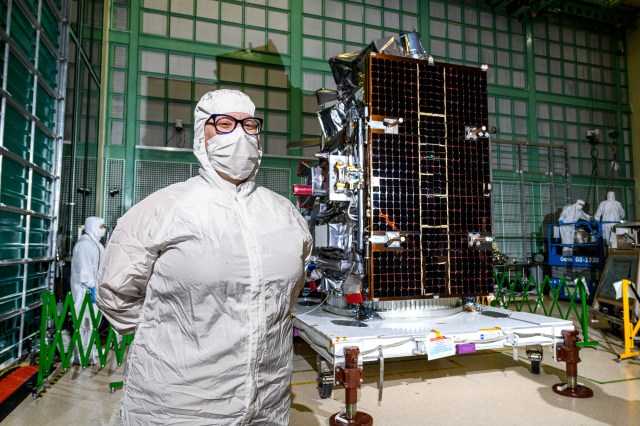
Veronica T. Pinnick Put NASA’s PACE Mission through Its Paces
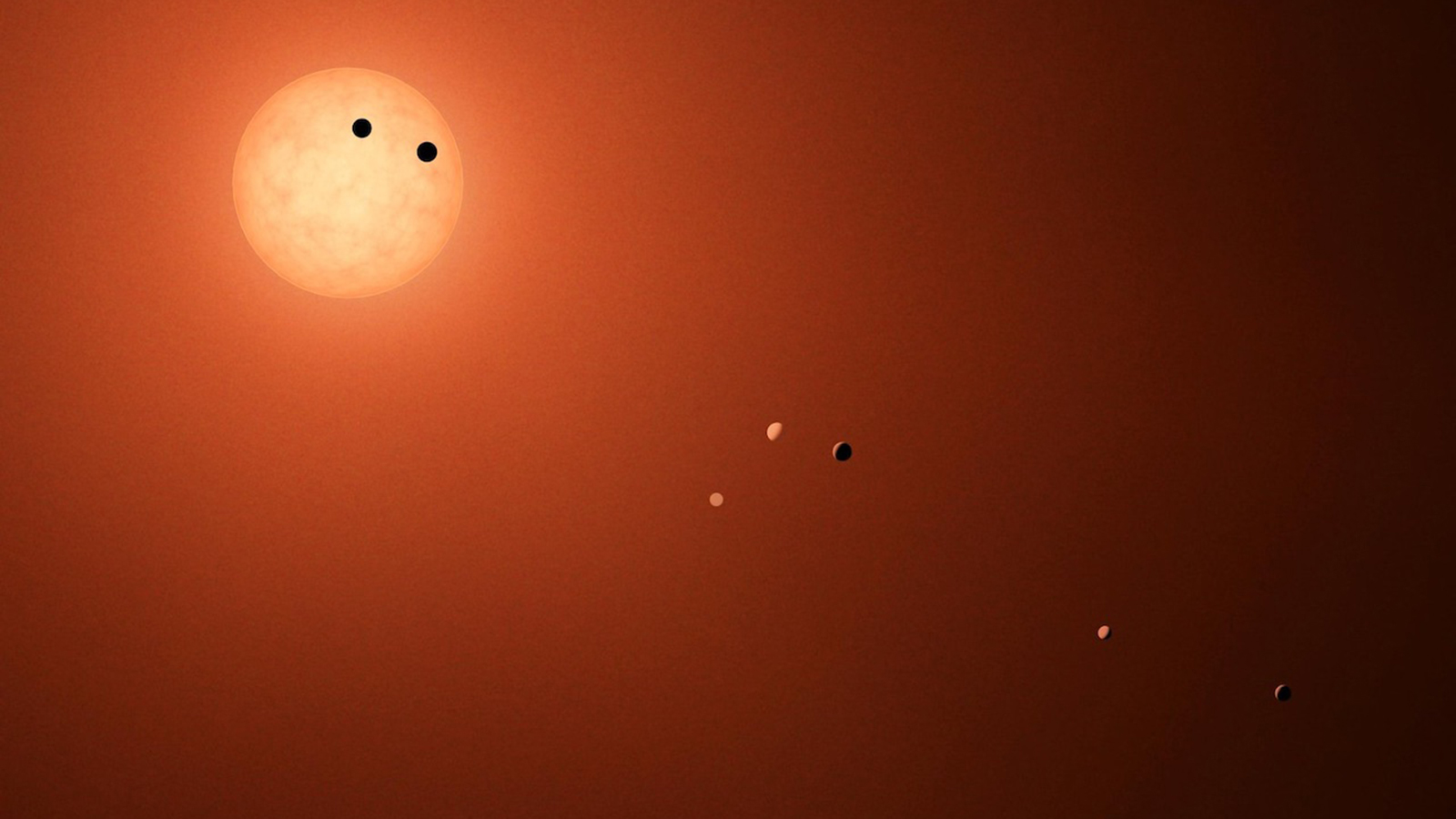
That Starry Night Sky? It’s Full of Eclipses
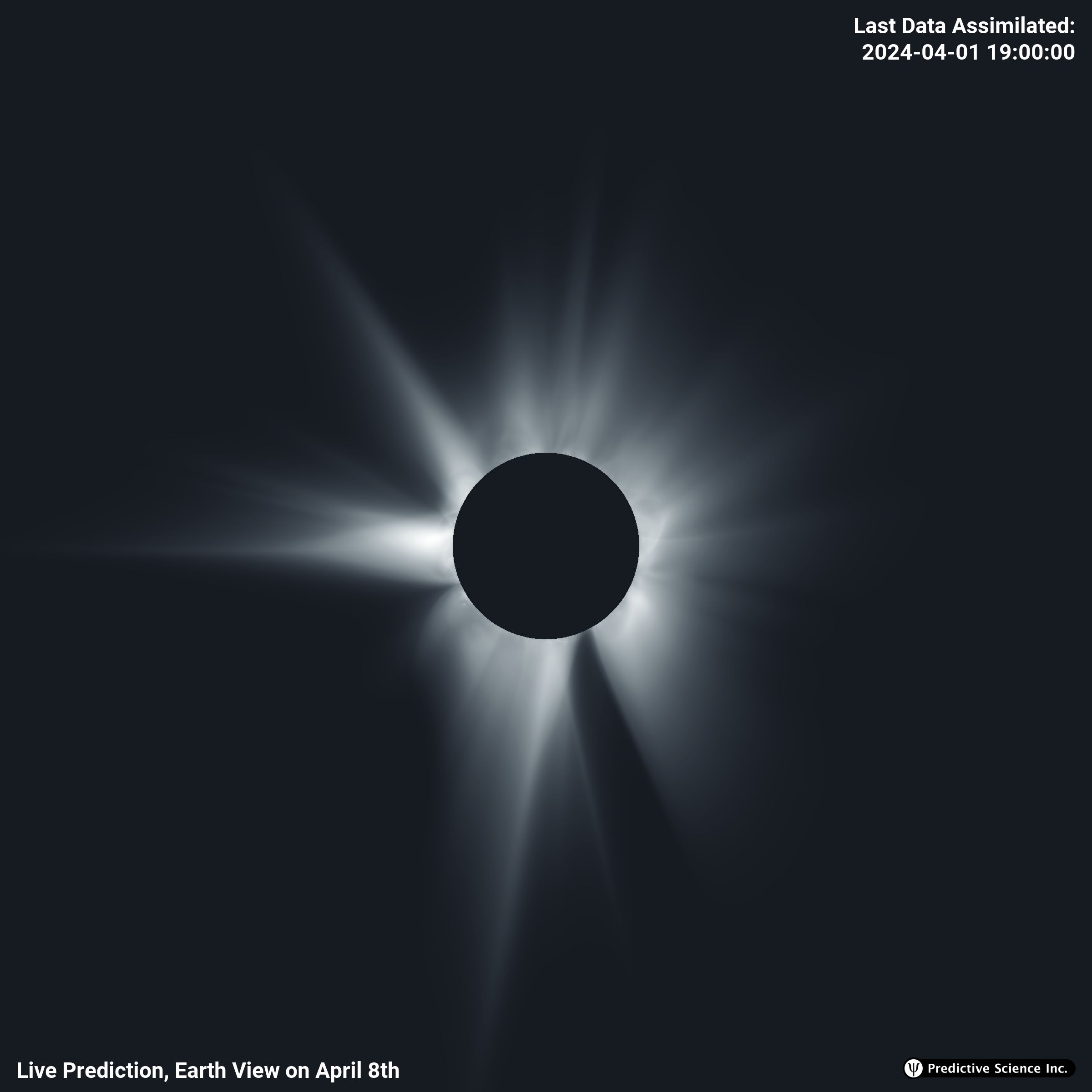
Scientists Use NASA Data to Predict Solar Corona Before Eclipse

NASA Astronaut Loral O’Hara, Expedition 70 Science Highlights

Diez maneras en que los estudiantes pueden prepararse para ser astronautas

Optical Fiber Production

NASA Data Shows How Drought Changes Wildfire Recovery in the West
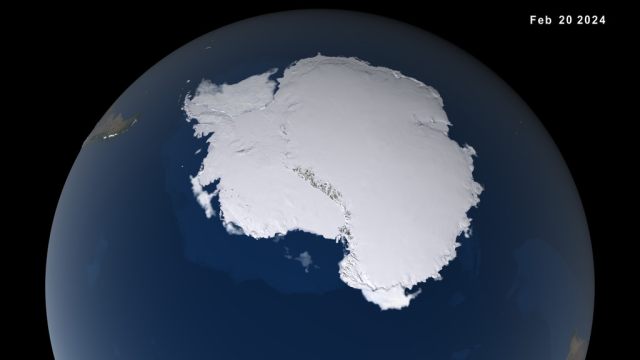
Antarctic Sea Ice Near Historic Lows; Arctic Ice Continues Decline

NASA Partnerships Bring 2024 Total Solar Eclipse to Everyone

Universe Stories
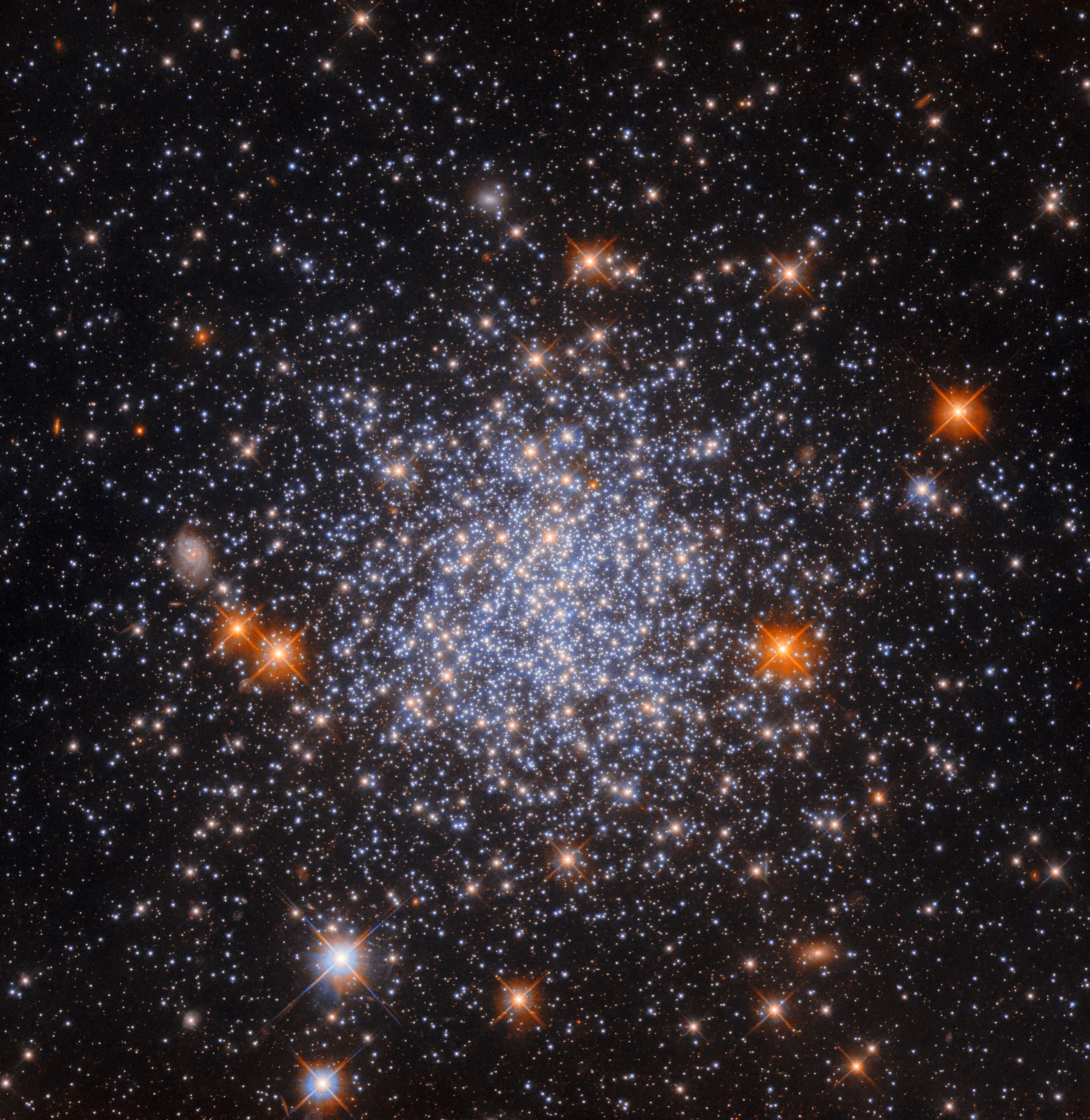
Hubble Finds a Field of Stars
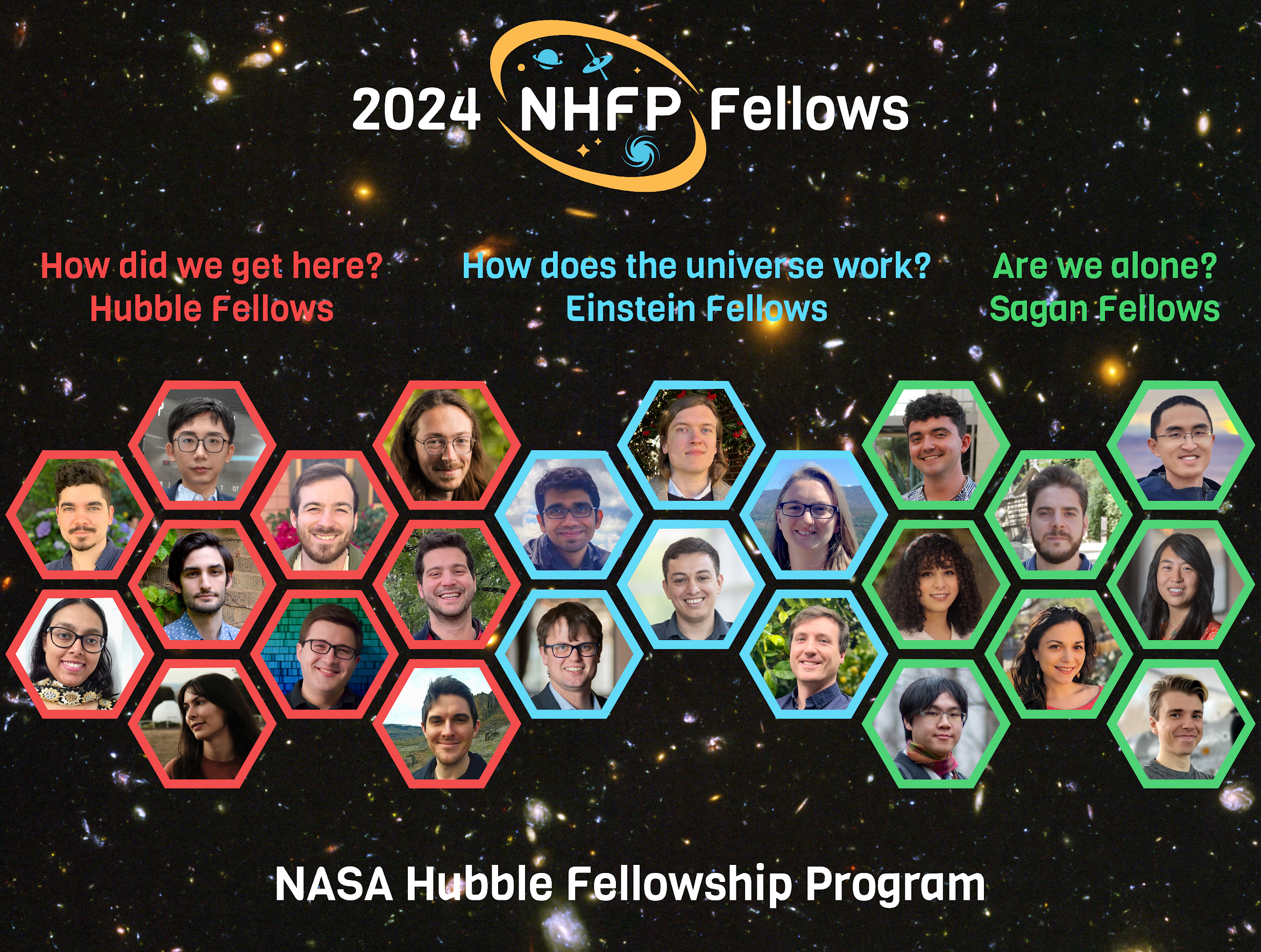
NASA Awards Astrophysics Postdoctoral Fellowships for 2024

ARMD Solicitations
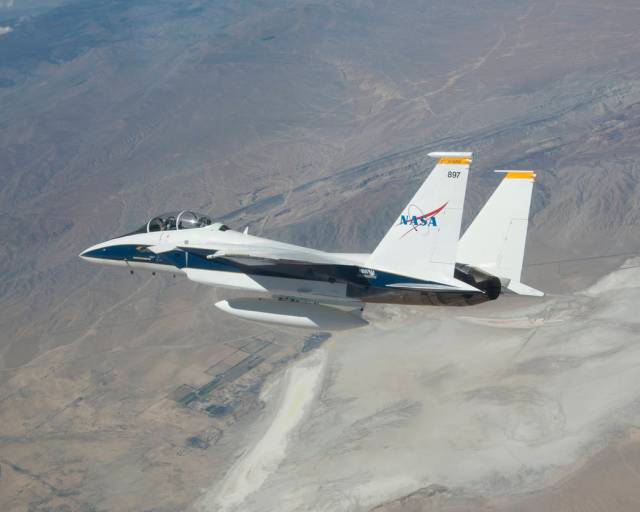
F-15D Support Aircraft

University Teams Selected as Finalists to Envision New Aviation Responses to Natural Disasters

David Woerner

Tech Today: Cutting the Knee Surgery Cord
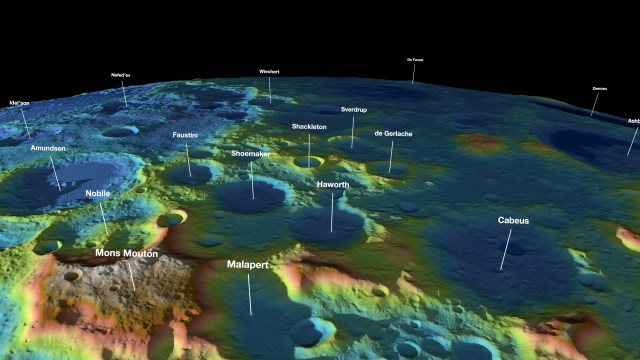
NASA, Industry Improve Lidars for Exploration, Science

NASA, Salisbury U. Enact Agreement for Workforce Development
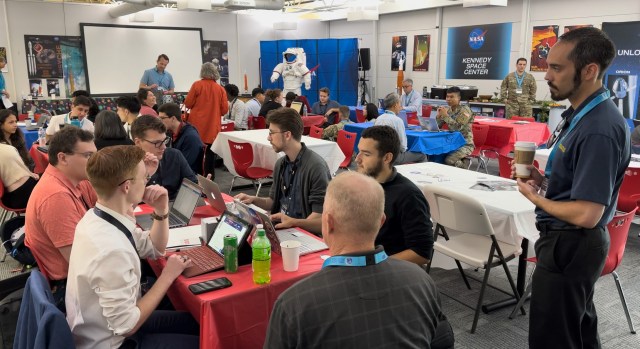
NASA, Partners Select Universities for CubeSat Summer Program
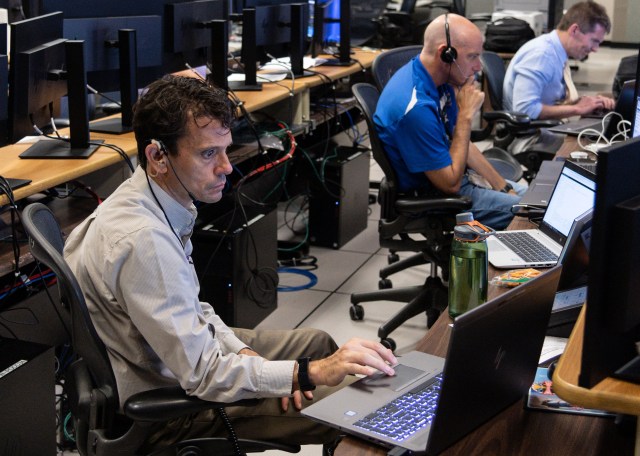
NASA Engineer Chris Lupo Receives 2024 Federal Engineer Award
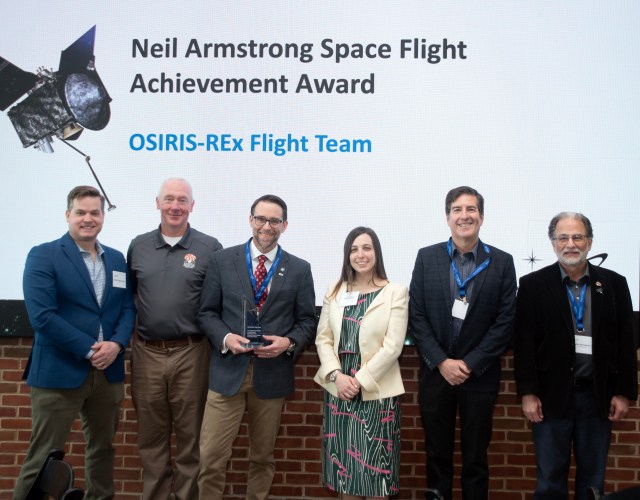
NASA’s OSIRIS-REx Earns Neil Armstrong Space Flight Achievement Award

Meet the Two Women Leading Space Station Science

Astronauta de la NASA Marcos Berríos

Resultados científicos revolucionarios en la estación espacial de 2023
Three ways to travel at (nearly) the speed of light.

Katy Mersmann
1) electromagnetic fields, 2) magnetic explosions, 3) wave-particle interactions.
One hundred years ago today, on May 29, 1919, measurements of a solar eclipse offered verification for Einstein’s theory of general relativity. Even before that, Einstein had developed the theory of special relativity, which revolutionized the way we understand light. To this day, it provides guidance on understanding how particles move through space — a key area of research to keep spacecraft and astronauts safe from radiation.
The theory of special relativity showed that particles of light, photons, travel through a vacuum at a constant pace of 670,616,629 miles per hour — a speed that’s immensely difficult to achieve and impossible to surpass in that environment. Yet all across space, from black holes to our near-Earth environment, particles are, in fact, being accelerated to incredible speeds, some even reaching 99.9% the speed of light.
One of NASA’s jobs is to better understand how these particles are accelerated. Studying these superfast, or relativistic, particles can ultimately help protect missions exploring the solar system, traveling to the Moon, and they can teach us more about our galactic neighborhood: A well-aimed near-light-speed particle can trip onboard electronics and too many at once could have negative radiation effects on space-faring astronauts as they travel to the Moon — or beyond.
Here are three ways that acceleration happens.
Most of the processes that accelerate particles to relativistic speeds work with electromagnetic fields — the same force that keeps magnets on your fridge. The two components, electric and magnetic fields, like two sides of the same coin, work together to whisk particles at relativistic speeds throughout the universe.
In essence, electromagnetic fields accelerate charged particles because the particles feel a force in an electromagnetic field that pushes them along, similar to how gravity pulls at objects with mass. In the right conditions, electromagnetic fields can accelerate particles at near-light-speed.
On Earth, electric fields are often specifically harnessed on smaller scales to speed up particles in laboratories. Particle accelerators, like the Large Hadron Collider and Fermilab, use pulsed electromagnetic fields to accelerate charged particles up to 99.99999896% the speed of light. At these speeds, the particles can be smashed together to produce collisions with immense amounts of energy. This allows scientists to look for elementary particles and understand what the universe was like in the very first fractions of a second after the Big Bang.
Download related video from NASA Goddard’s Scientific Visualization Studio
Magnetic fields are everywhere in space, encircling Earth and spanning the solar system. They even guide charged particles moving through space, which spiral around the fields.
When these magnetic fields run into each other, they can become tangled. When the tension between the crossed lines becomes too great, the lines explosively snap and realign in a process known as magnetic reconnection. The rapid change in a region’s magnetic field creates electric fields, which causes all the attendant charged particles to be flung away at high speeds. Scientists suspect magnetic reconnection is one way that particles — for example, the solar wind, which is the constant stream of charged particles from the Sun — is accelerated to relativistic speeds.
Those speedy particles also create a variety of side-effects near planets. Magnetic reconnection occurs close to us at points where the Sun’s magnetic field pushes against Earth’s magnetosphere — its protective magnetic environment. When magnetic reconnection occurs on the side of Earth facing away from the Sun, the particles can be hurled into Earth’s upper atmosphere where they spark the auroras. Magnetic reconnection is also thought to be responsible around other planets like Jupiter and Saturn, though in slightly different ways.
NASA’s Magnetospheric Multiscale spacecraft were designed and built to focus on understanding all aspects of magnetic reconnection. Using four identical spacecraft, the mission flies around Earth to catch magnetic reconnection in action. The results of the analyzed data can help scientists understand particle acceleration at relativistic speeds around Earth and across the universe.
Particles can be accelerated by interactions with electromagnetic waves, called wave-particle interactions. When electromagnetic waves collide, their fields can become compressed. Charged particles bouncing back and forth between the waves can gain energy similar to a ball bouncing between two merging walls.
These types of interactions are constantly occurring in near-Earth space and are responsible for accelerating particles to speeds that can damage electronics on spacecraft and satellites in space. NASA missions, like the Van Allen Probes , help scientists understand wave-particle interactions.
Wave-particle interactions are also thought to be responsible for accelerating some cosmic rays that originate outside our solar system. After a supernova explosion, a hot, dense shell of compressed gas called a blast wave is ejected away from the stellar core. Filled with magnetic fields and charged particles, wave-particle interactions in these bubbles can launch high-energy cosmic rays at 99.6% the speed of light. Wave-particle interactions may also be partially responsible for accelerating the solar wind and cosmic rays from the Sun.
Download this and related videos in HD formats from NASA Goddard’s Scientific Visualization Studio
By Mara Johnson-Groh NASA’s Goddard Space Flight Center , Greenbelt, Md.

Speed of Light Calculator
Table of contents
With this speed of light calculator, we aim to help you calculate the distance light can travel in a fixed time . As the speed of light is the fastest speed in the universe, it would be fascinating to know just how far it can travel in a short amount of time.
We have written this article to help you understand what the speed of light is , how fast the speed of light is , and how to calculate the speed of light . We will also demonstrate some examples to help you understand the computation of the speed of light.
What is the speed of light? How fast is the speed of light?
The speed of light is scientifically proven to be the universe's maximum speed. This means no matter how hard you try, you can never exceed this speed in this universe. Hence, there are also some theories on getting into another universe by breaking this limit. You can understand this more using our speed calculator and distance calculator .
So, how fast is the speed of light? The speed of light is 299,792,458 m/s in a vacuum. The speed of light in mph is 670,616,629 mph . With this speed, one can go around the globe more than 400,000 times in a minute!
One thing to note is that the speed of light slows down when it goes through different mediums. Light travels faster in air than in water, for instance. This phenomenon causes the refraction of light.
Now, let's look at how to calculate the speed of light.
How to calculate the speed of light?
As the speed of light is constant, calculating the speed of light usually falls on calculating the distance that light can travel in a certain time period. Hence, let's have a look at the following example:
- Source: Light
- Speed of light: 299,792,458 m/s
- Time traveled: 100 seconds
You can perform the calculation in three steps:
Determine the speed of light.
As mentioned, the speed of light is the fastest speed in the universe, and it is always a constant in a vacuum. Hence, the speed of light is 299,792,458 m/s .
Determine the time that the light has traveled.
The next step is to know how much time the light has traveled. Unlike looking at the speed of a sports car or a train, the speed of light is extremely fast, so the time interval that we look at is usually measured in seconds instead of minutes and hours. You can use our time lapse calculator to help you with this calculation.
For this example, the time that the light has traveled is 100 seconds .
Calculate the distance that the light has traveled.
The final step is to calculate the total distance that the light has traveled within the time . You can calculate this answer using the speed of light formula:
distance = speed of light × time
Thus, the distance that the light can travel in 100 seconds is 299,792,458 m/s × 100 seconds = 29,979,245,800 m
What is the speed of light in mph when it is in a vacuum?
The speed of light in a vacuum is 670,616,629 mph . This is equivalent to 299,792,458 m/s or 1,079,252,849 km/h. This is the fastest speed in the universe.
Is the speed of light always constant?
Yes , the speed of light is always constant for a given medium. The speed of light changes when going through different mediums. For example, light travels slower in water than in air.
How can I calculate the speed of light?
You can calculate the speed of light in three steps:
Determine the distance the light has traveled.
Apply the speed of light formula :
speed of light = distance / time
How far can the speed of light travel in 1 minute?
Light can travel 17,987,547,480 m in 1 minute . This means that light can travel around the earth more than 448 times in a minute.
Speed of light
The speed of light in the medium. In a vacuum, the speed of light is 299,792,458 m/s.
Light Travel Time Effect
- Living reference work entry
- First Online: 01 January 2015
- Cite this living reference work entry

- Nader Haghighipour 8
310 Accesses
6 Altmetric
- Light Travel Time Effects
- Binary Star Systems
- Tertiary System
- Reflex Movements
- Constant Period
These keywords were added by machine and not by the authors. This process is experimental and the keywords may be updated as the learning algorithm improves.
This is a preview of subscription content, log in via an institution to check access.
Access this chapter
Institutional subscriptions
References and Further Reading
Hinse TC, Gozdziewski K, Lee JW, Haghighipour N, Lee Chung-Uk (2012) The Astron J 144(2): article id. 34
Google Scholar
Irwin JB (1952) The determination of a light-time orbit. Astrophys J 116:211
Article ADS Google Scholar
Irwin JB (1959) Standard light-time curves. Astron J 64:149
Download references
Author information
Authors and affiliations.
Institute for Astronomy, University of Hawaii-Manoa, Honolulu, Hawaii, HI, USA
Nader Haghighipour
You can also search for this author in PubMed Google Scholar
Corresponding author
Correspondence to Nader Haghighipour .
Editor information
Editors and affiliations.
Centro de Biología Molecular, Universidad Autónoma de Madrid, Madrid, Spain
Ricardo Amils
Labo. d'Astrophysique de Bordeaux (LAB), Observatoire Aquitain des Sciences de l'Univers (OASU), Floirac CX, France
Muriel Gargaud
Centro de Astrobiología (CAB), Inst. Nacional de Técnica Aeroespacial, Torrejón de Ardoz, Madrid, Spain
José Cernicharo Quintanilla
Geophysical Lab., Carnegie Institution of Washington, Washington, District of Columbia, USA
Henderson James Cleaves
Astronomy Department, University of Massachusetts, Amherst, Massachusetts, USA
William M. Irvine
Dépt. Sc. de la Terre et de l’Atmosphère, Université du Québec, Montréal, Montreal, Québec, Canada
Daniele Pinti
Centre National d'Etudes Spatiale (CNES) DPI/E2U, Paris CX, France
Michel Viso
Rights and permissions
Reprints and permissions
Copyright information
© 2014 Springer-Verlag Berlin Heidelberg
About this entry
Cite this entry.
Haghighipour, N. (2014). Light Travel Time Effect. In: Amils, R., et al. Encyclopedia of Astrobiology. Springer, Berlin, Heidelberg. https://doi.org/10.1007/978-3-642-27833-4_5301-4
Download citation
DOI : https://doi.org/10.1007/978-3-642-27833-4_5301-4
Received : 16 October 2014
Accepted : 16 October 2014
Published : 05 May 2015
Publisher Name : Springer, Berlin, Heidelberg
Online ISBN : 978-3-642-27833-4
eBook Packages : Springer Reference Physics and Astronomy Reference Module Physical and Materials Science Reference Module Chemistry, Materials and Physics
- Publish with us
Policies and ethics
- Find a journal
- Track your research

Solar eclipse 2024: A traveller’s guide to the best places to be when the light goes out
O n 8 April 2024, a total solar eclipse will sweep across North America , providing an astronomical experience in many alluring locations.
Only a tiny proportion of humanity has ever witnessed a total eclipse – but tens of millions of people will be able to experience one as the “path of totality” sweeps from the Pacific to the Atlantic during the course of that magical Monday.
Here’s what you need to know about why you should see it and where to be.
What happens during a total solar eclipse?
The greatest show on earth comes courtesy of the lifeless moon. Normally the orbiting lunar lump merely provides earth with tides, moonlight and somewhere to aim space rockets. But roughly once a year the natural satellite aligns with the sun and, thanks to a geometric miracle, blots out the hub of the solar system to create a total eclipse.
“Even though the moon is 400 times smaller than the sun, it’s also about 400 times closer to earth than the sun is,” says Nasa. “This means that from earth, the moon and the sun appear to be roughly the same size in the sky.”
A narrow band marking the “path of totality” carves an arc of darkness across the surface of our planet. If you are somewhere on that line at the predicted time, and you have clear skies, then the experience will become a lifelong memory.
The closer you are to the centre of the path of totality, the longer the total eclipse will last. The astronomer Dr John Mason, who has guided dozens of eclipse trips (and will be doing so again in 2024), says: “People down in southwest Texas will get about four minutes 20 seconds, and that reduces to about three minutes 20 seconds up in the northeast. That’s a pretty good, long total eclipse.”
What’s so good about seeing an eclipse?
In the days leading up to the eclipse, locations in the path of totality acquire something of a carnival atmosphere as astronomical tourists converge in excited anticipation.
On the day, the cosmological performance begins with a warm-up lasting more than an hour, during which the moon steadily nibbles away at the surface of the sun.
Suddenly, you experience totality. The stars and planets appear in the middle of the day. The air chills.
To testify to the heavenly fit between our two most familiar heavenly bodies, faint diamonds known as Baily’s beads peek out from behind the moon. They actually comprise light from the sun slipping through lunar valleys.
A sight to behold – so long as you can see the moon blotting out the sun and appreciate the mathematical perfection of nature in our corner of the galaxy.
Eclipses are entirely predictable: we know the stripes that the next few dozen will paint upon the surface of the Earth. But the weather is not. Cloud cover, which blighted the Cornwall eclipse in 1999, downgrades a cosmological marvel to an eerie daytime gloom.
Almost as predictable as the eclipse is that traffic towards the path of totality will be heavy on the morning of 8 April 2024.
Accommodation rates are astronomical: even humdrum motel rooms in Niagara are selling for C$600 (£350) for the night of 7-8 April 2024.
Where will the great American eclipse 2024 be visible?
The path of totality makes landfall from the Pacific at Mazatlan on Mexico’s Pacific Coast and sweeps northeastwards to reach the US-Mexican border at Piedras Negras.
In the US, three big Texan cities – San Antonio, Austin and Dallas – are on the extremes of the path of totality; many citizens are likely to drive to locations near the centre of the line.
Arkansas will be an attractive place to see the eclipse , with both Texarkana (on the border with Texas) and Little Rock within the path of totality.
In the Midwest, Indianapolis and Cleveland share the distinction of being fairly central in the path of totality. In upstate New York, Buffalo and nearby Niagara Falls (shared with Canada) could be extremely attractive – though prone in early April to cloudy skies.
In Canada , Montreal is just touched by the path of totality. The line then reverts to the US, passing across northern Maine – which would be a superb location were the weather good. Then back to Canada’s Maritime Provinces, with New Brunswick, Prince Edward Island and Newfoundland all in the line of darkness.
I’d rather be in a more exciting city – will they get a partial eclipse?
Boston, New York and Chicago are among the big cities that will see a sizeable chunk of the sun blotted out. Viewer as far apart as Alaska and the far north of Colombia and the Caribbean will, if skies are clear and they use the correct eye protection, see a partial eclipse. But there is nothing to compare with a total eclipse.
Eclipse guru Dr Mason sums up the difference between a 99 per cent partial eclipse and a total eclipse as far apart as “a peck on the cheek and a night of passion”.
“There will be people who will look at the map and say, ‘I live in Cincinnati or I live in Columbus [Ohio] and I’m just outside the zone of totality. But I’m going to get a 99 per cent-plus eclipse, so maybe I won’t bother to travel’.
“What they don’t realise is there an enormous difference between 99 per cent and 100 per cent. And there’s a range of phenomena that they won’t see if they put up with 99 per cent.”
You must use special eclipse safety glasses or viewers when viewing a partial eclipse or during the partial phases of a total solar eclipse.
Where should I be for the total experience?
There are no guarantees of clear skies: all you can do is play the odds based on the record of cloud cover for the corresponding date in previous years.
Dr Mason says the average expected cloud cover amounts increase from around 40-45 per cent on the Mexico/Texas border to over 80 per cent in Maine, New Brunswick and Newfoundland.
Three particularly tempting locations:
- Southern Texas , close to San Antonio or Austin. Besides clear skies being more likely than not, access is easy with direct flights to Austin. Importantly there is much to explore in the region before and after the eclipse, from Big Bend National Park on the Rio Grande to Space Center Houston – an excellent place to continue the cosmological theme.
- Northern Arkansas , a picturesque part of the state, with the added attraction of Memphis just a couple of hours away.
- Niagara Falls : the dramatic border between the US and Canada could be an eclipse washout due to clouds. But the natural surroundings are impeccable – and there is plenty of accommodation, which will avoid the risk of being caught in severe traffic congestion on the freeways from Toronto and locations in New York State.
Will I be able to see a partial eclipse from the UK?
No. The eclipse ends with the sunset in the eastern Atlantic, off the coast of Portugal, before it reaches the UK and Ireland.
When are the next total solar eclipses?
Summer 2026 – Wednesday 12 August, to be precise – should bring a spectacular eclipse visible in northern Spain at the height of the European holiday season. The path of totality begins in the Arctic and crosses Greenland and Iceland before arriving in the northern half of Spain. The stripe of darkness will traverse the great cities of Bilbao, Zaragoza and Valencia in mainland Spain before arriving in Palma de Mallorca.
The following summer (2 August 2027), the southern tip of mainland Spain is in the path of totality for an eclipse that will sweep across North Africa and the Arabian peninsula : going east from the Strait of Gibraltar, it will encompass Morocco, Algeria, Tunisia, Libya, Egypt, the northeasternmost corner of Sudan, Saudi Arabia and Yemen.
Just under 12 months later, on 22 July 2028, Outback Australia will be the place to be. A total eclipse will make landfall in northern Western Australia, sweep across the Northern Territory and part of southwest Queensland – then clean across New South Wales, with Sydney in the middle of the path of totality.
Winter cloud cover could disrupt the experience in Australia’s largest city – and is very likely in the southern portion of New Zealand’s South Island where the eclipse reaches a finale.
Australia also features in the cosmological plans on 25 November 2030. This is early summer in the southern hemisphere, and likely to be good conditions for viewing in Namibia, Botswana and South Africa (Durban is on the path of totality) as well as South Australia.
The Independent is the world’s most free-thinking news brand, providing global news, commentary and analysis for the independently-minded. We have grown a huge, global readership of independently minded individuals, who value our trusted voice and commitment to positive change. Our mission, making change happen, has never been as important as it is today.
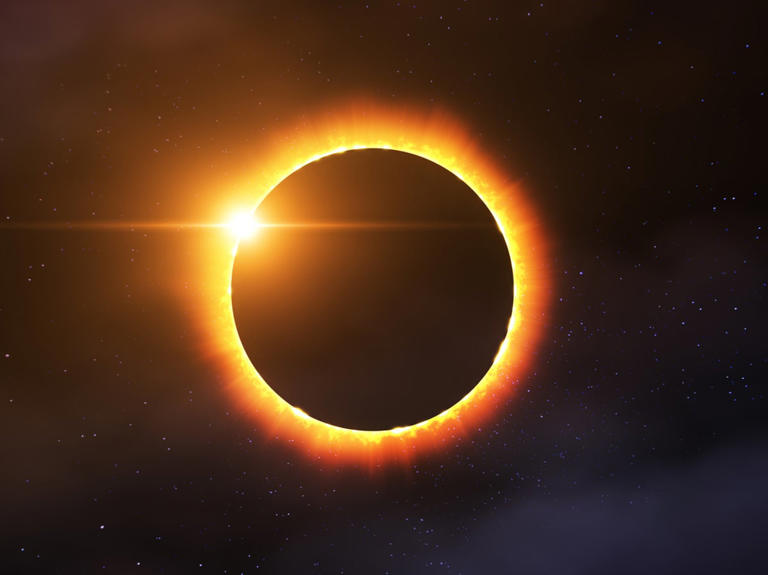
An astrophysicist claims he finally figured out time travel
If you buy through a BGR link, we may earn an affiliate commission, helping support our expert product labs.
Time travel has been one of the biggest tropes in science fiction for years. But what if you could actually go back in time and visit a loved one before their death? There’s, obviously, a lot we don’t know about what kind of consequences time travel might bring to the table , but that hasn’t stopped physicist Ron Mallet from a lifelong obsession with trying to figure out the time travel equation.
What’s even more impressive about this lifelong endeavor, though, is that Mallet now claims to have solved the equation and figured out how to build an actual time machine. Mallet’s inspiration and obsession with time travel originally began when he was much younger, Earth.com notes . Following the death of his beloved father, Mallet lost himself in novels, including The Time Machine by H.G. Wells.

It is certainly a respectable goal, especially for anyone who has lost someone they loved dearly. Mallet says that his idea of a time machine centers around an “intense and continuous rotating beam of light” that can manipulate gravity. A device built by him, following his equation, would use a ring of lasers to mimic the effects of a black hole, which appears to distort space and time around them.
Tech. Entertainment. Science. Your inbox.
Sign up for the most interesting tech & entertainment news out there.
By signing up, I agree to the Terms of Use and have reviewed the Privacy Notice.
Of course, learning the time travel equation and building a working time machine are two different things altogether. Sure, scientists have simulated black holes in a lab once or twice, but never anything with the kind of power or reality-effecting pull that Mallet seems to think would make time travel possible. That isn’t to say that he’s got things wrong, though.
His equation for time travel may be exactly what is needed to break through this lifelong obsession and actually travel back in time. But building something capable of testing it is going to be a whole separate endeavor in and of itself.
This article talks about:
Josh Hawkins has been writing for over a decade, covering science, gaming, and tech culture. He also is a top-rated product reviewer with experience in extensively researched product comparisons, headphones, and gaming devices.
Whenever he isn’t busy writing about tech or gadgets, he can usually be found enjoying a new world in a video game, or tinkering with something on his computer.
- Construction on the first EV charging highway will start this month
- This free app claims to use AI to tell if someone is lying
- Revolutionary new power tech can transmit electricity through glass to your outdoor devices
More Science

New tech will let wind turbines build themselves

How to make sure your eclipse glasses are actually safe to use

Our landfills are destroying the Earth, study shows

Scientists made implantable batteries that are powered by your body’s oxygen
Latest news.

What’s new on Xbox Game Pass in April 2024, and what’s leaving

This clip of Studio Ghibli’s Hayao Miyazaki railing against AI is more relevant now than ever

31 new video games coming in April 2024

Google Podcasts shuts down today – here are 6 podcast apps to use instead
Sign up for the most interesting tech & entertainment news out there.
When is the 2024 total solar eclipse? Your guide to glasses, forecast, where to watch.
Editor's note: An updated cloud forecast for the April 2024 total solar eclipse is in. Read the latest eclipse forecast and news as of Monday, April 1 .
We're less than two weeks away from the astronomical event of the decade: A total eclipse of the sun , which will grace the nation's skies from Texas to Maine on the afternoon of Monday, April 8 .
Millions of people are expected to travel to see the spectacle, which will also attract scientists from across the country to study its unique effects on the Earth and its atmosphere . (Meanwhile, brands such as Burger King, Pizza Hut, Applebee's and Sonic are getting in on the eclipse excitement too.)
The full total solar eclipse experience will plunge people along a narrow path into darkness midday, but people outside the path of totality could still use eclipse glasses to see the moon pass in front of the sun. It's an awesome and confusing sight on the ground and in the sky.
It should go without saying: Don't drive while wearing eclipse glasses
One task to do now is to get yourself a pair of special eclipse glasses (and luckily there's still time to score a free pair of eclipse glasses ). They're important eyewear during an eclipse because they will block out the sun's harmful rays, which could damage your eyes when you're looking at the sun — even if it's partially blocked.
Solar eclipse glasses are still readily available from plenty of vendors across the internet as of Thursday, March 28. But be wary of counterfeit or fake glasses , experts warned.
The other big factor everyone's anxiously awaiting is the weather forecast, which most experts say is still a bit far away for a specific forecast. But more detailed, realistic forecasts will start to roll in over the next few days.
Of particular interest will be the cloud forecast , as a deck of thick, low clouds would likely ruin the entire event. But if the clouds are higher up in the atmosphere, such as thin, wispy cirrus , they'd act to diffuse but not ruin the eclipse.
USA TODAY 10Best: 10 solar eclipse fun facts to share with your friends
There's plenty to know before the big day, which won't happen again for about two decades . Read on for answers for all your eclipse questions, including how to watch the eclipse , understand the eclipse and use eclipse glasses to stay safe .
WATCHING THE APRIL 2024 ECLIPSE
How do i watch the 2024 solar eclipse.
There are a few ways of watching the eclipse:
- Get the full experience in person : If you're in a narrow band of U.S. land that spans from Texas to Maine, you could see the moon block the sun and its shadow cast a night-like darkness over Earth for a few minutes. You'll briefly be able to look up without eye protection and see the moon block the sun.
- Watch from outside the path of totality : Much of the U.S. is set to get a partial view of the eclipse that isn't nearly as impressive as being in the path of totality. Earth won't be plunged into complete darkness and you'll have to wear protective eyewear to see the moon partially block the sun.
- Watch a livestream : Check back on April 8 for a video feed from the path of totality. It's not the same as being there in person, but hey, at least you won't have to sit in traffic .
Totality explained: The real April 2024 total solar eclipse happens inside the path of totality
What time is the solar eclipse on April 8?
The eclipse will begin in Texas at 1:27 p.m. CDT and end in Maine at 3:35 p.m. EDT, but the exact time of the eclipse varies by where you are in its path.
You can search by zip code to find the exact time for your location.
Where will the April eclipse be visible?
All of the lower 48 U.S. states will see the moon at least clip the sun, but that sight is a trifle compared to being in the path of totality.
Because the narrow path includes or is near some of the nation's largest cities, expect millions of people to crowd into a band of land a little over 100 miles wide that spans from the Texas/Mexico border to the Maine/Canada border.
Here are the major cities in each state where you can expect to experience totality (note that the included times do not account for when the partial eclipse begins and ends):
- Dallas, Texas: 1:40-1:44 p.m. CDT
- Idabel, Oklahoma: 1:45-1:49 p.m. CDT
- Little Rock, Arkansas: 1:51-1:54 p.m. CDT
- Poplar Bluff, Missouri: 1:56-2:00 p.m. CDT
- Paducah, Kentucky: 2-2:02 p.m. CDT
- Carbondale, Illinois: 1:59-2:03 p.m. CDT
- Evansville, Indiana: 2:02-2:05 p.m. CDT
- Cleveland, Ohio: 3:13-3:17 p.m. EDT
- Erie, Pennsylvania: 3:16-3:20 p.m. EDT
- Buffalo, New York: 3:18-3:22 p.m. EDT
- Burlington, Vermont: 3:26-3:29 p.m. EDT
- Lancaster, New Hampshire: 3:27-3:30 p.m. EDT
- Caribou, Maine: 3:32-3:34 p.m. EDT
Will clouds block the April 2024 eclipse?
It's too soon to say for sure, but history offers some clues.
Chances of cloudy skies are pretty high along much of the eclipse's northern path, and some areas such as Buffalo have about a 1-in-3 chance of clear skies in early April.
Skies are usually more clear to the south. Right along the Texas/Mexico border, chances of a clear sky can be nearly 75%.
However, early forecasts tell a different story — although forecaster caution it's too early for truly accurate forecasts.
Keep in mind that clouds don't always ruin an eclipse . High, wispy clouds won't spoil the show in the same way that low thick clouds would. In that case, you wouldn't be able to see the moon pass in front of the sun, but you would still notice a sudden darkness in the path of totality.
What dangers are associated with the eclipse?
The eclipse , as exciting and fun as it promises to be, comes with a growing number of safety warnings — both for what will happen in the sky and what will happen on the ground.
In addition to the dangers of looking at the eclipse without proper eyewear, we've heard warnings about potentially dangerous fake eclipse glasses , the possibility for increased car c rashes around the time of the eclipse — and possible air travel headaches due to delayed or cancelled flights.
Where is the best place to watch the eclipse?
In the weeks leading up to the eclipse, Texas was considered the best state for eclipse viewing . Historically, there's a good chance the skies will be clear and its location along the southern path of the eclipse means totality will last a little longer. That could change as the forecast evolves .
A few lucky travelers will also have a front-row seat with unobstructed views — from a plane .
Will traffic be bad?
Most likely, yes — especially after the eclipse ends . Millions of people will crowd into the narrow path of totality, then many will attempt to leave all at once as soon as the eclipse is over.
When a total solar eclipse passed over the U.S. in 2017, reports say some traffic jams didn't fully clear for more than 12 hours. Even worse, a recent study reported that the 2017 eclipse "was associated with increased risks of a fatal traffic crash" – potentially as much as a 31% increase, the study said .
Also worth noting: The eclipse is expected to have impacts for air travel as well.
Cities across the eclipse's path of totality are also bracing for an influx of visitors who are already booking up hotels and short-term vacation rentals , officials have told USA TODAY. "Hotels are almost sold out," said Shalissa Perry, the chief marketing officer for Downtown Dallas.
Why are schools closing for the eclipse?
Primarily out of a concern for students' safety, schools across the country have given students the day of the eclipse, April 8, as a day off, a half day or a chance for e-learning. In Tennessee, for example, officials also say it gives students a chance to experience the eclipse with their family and friends .
What's it like to watch a solar eclipse from space?
Ever wondered what it is like see the solar eclipse from space? NASA scientist and veteran astronaut Terry Virts has witnessed the spectacle in space .
"When I was in space in 2015, we saw an eclipse over the North Atlantic," Virts told USA TODAY this week. "It was an eclipse that very few humans saw I think, but it was a really unique experience to look down and just see this big black circle kind of moving across the planet."
"It was unlike anything I've ever seen," Virts adds. "I joke I'm glad they told us there was an eclipse because it would have been unsettling to look down at Earth and see this black spot moving across. It was really cool."
Virts, who is the face of Sonic's eclipse-themed Blackout Slush Float , said that though he's seen one eclipse from space and many from Earth, he is super excited about the upcoming one on April 8.
UNDERSTANDING THE 2024 ECLIPSE
What is a solar eclipse definition explained..
A total solar eclipse happens when three celestial spheres — the sun, moon and Earth — line up in a specific way in space.
According to NASA, a solar eclipse happens when the moon passes between the sun and Earth. That alignment casts a moving shadow on Earth that either fully or partially blocks the sun's light in some areas. This leads to a period of partial or full darkness on a narrow stretch of Earth.
The path is so narrow because of the huge distance and size of the sun — as well as the moon's distance from Earth. That focuses the moon's shadow on an area of land much smaller than the moon itself. The movement of the shadow across the land happens as the Earth's rotation interacts with the orbit of the moon.
A total eclipse only happens occasionally because the moon doesn't orbit in the exact same plane as the sun and Earth do. In addition, a solar eclipse can only happen during a new moon.
What's special about a total solar eclipse?
The total solar eclipse on April 8 is causing such a stir because the rare event is an astronomical experience like no other that will be unusually accessible to millions of people.
April's total solar eclipse will fall over more places in the U.S. than the total eclipse before and after it. And the broad length of the path of totality – where Americans have the best shot of getting a clear view – is "much wider" than it was for the eclipse in 2017 , according to the National Aeronautics and Space Administration.
A total solar eclipse is also far more impressive than a lunar or an annular solar eclipse. During an annular eclipse, the moon covers the Sun but leaves an outside ring some call a "ring of fire" — it darkens the sky instead of plunging Earth into a night-like darkness, which is what happens during a total solar eclipse. And a lunar eclipse – the appearance of a red moon – happens when the moon passes into the Earth's shadow, according to NASA.
Total solar eclipses can have spiritual significance, too . Ancient cultures viewed as a sign of the gods' anger or impending departure. Some religions today are hosting eclipse viewings and services.
Historically, eclipses have left major marks on religious and spiritual civilizations. In Christianity, an eclipse has been associated with the darkness that accompanied Jesus' crucifixion and in Islam, the passing of the Prophet Muhammad's son Ibrahim.
When was the last solar eclipse?
The USA's most recent total solar eclipse was on August 21, 2017, and stretched from Oregon to South Carolina.
When will the next solar eclipse happen?
The next visible total solar eclipse to cross over the U.S. after April will come in more than two decades on Aug. 23, 2044, according to NASA.
And that eclipse won't be as accessible as the 2024 one: The path of totality in 2044 will only touch the states of Montana, North Dakota and South Dakota, according to the Planetary Society, a nonprofit involved in research, public outreach and political space advocacy. Another total eclipse will pass over the U.S. in 2045 that will be more accessible to Americans, including for people who live in California, Florida and Nevada.
ECLIPSE GLASSES AND SAFETY
What are eclipse glasses and why are they needed for the eclipse.
Gazing at the bright rays from the eclipse without protective eyewear can seriously damage your eye, so wearing a pair of protective glasses is important.
There's a technical standard for eclipse glasses, which are designed to block out most light and let you safely see the moon pass in front of the sun: It's called ISO 12312-2 after the International Organization of Standardization.
While there's concerns that not all glasses marketed as eclipse glasses live up to that standard, experts say in the past, the shortcomings haven't been significant .
But as the 2024 eclipse approaches, the American Astronomical Society has warned that there are some counterfeit and fake eclipse glasses being sold from unverified vendors that would be unsafe to use during the eclipse. They recommend buying from a vetted vendor and testing the glasses before the eclipse.
How do I get solar eclipse glasses?
You should buy from a reputable source who can ship the glasses to you in time for April 8. A guide to last-minute eclipse glasses explains more.
Heads up: The online marketplace is flooded with retailers selling solar eclipse glasses they claim have the NASA seal of approval . Consider that a red flag to look elsewhere.
How can you test eclipse glasses?
NASA shared an easy method to check eclipse glasses at home.
Buyers should put on their glasses and look at a bright light, like a flashlight. If the light is "extremely dim," or doesn't appear at all, the glasses are safe, Susannah Darling, of NASA's Goddard Space Flight Center, said in an instructional video. Viewers should be able to see the filament of the lightbulb, not the glow surrounding the bulb.
Can you really go blind watching a solar eclipse?
You could severely damage your eyes . Directly staring at the sun before and after the total eclipse, or watching a partial eclipse outside the path of totality without proper eye protection, can result in permanent damage including blurred and altered vision.
While rare, eye damage from watching a partial eclipse happens in part because a person's natural response to squint when looking at sunlight does not get triggered. In the lead-up to the April 8 solar eclipse , doctors and a rare set of eclipse watchers are warning about watching this planetary event without adequate eclipse glasses or with the naked eye.
It’s hard for experts to know or even estimate how many people experience eye damage from solar eclipses. Since looking at an eclipse does not cause complete blindness, people with permanent damage may not know they have it or report it to a doctor. The 2017 eclipse , which passed from Oregon to South Carolina, is thought to have caused about 100 cases, according to the American Astronomical Society .
How can I watch the eclipse without glasses?
If you don't have access to eclipse glasses do not use regular sunglasses — You need a more creative solution for safe viewing, like a pinhole projector .
Welding glasses are not recommended for eclipse viewing .
Should I take dogs or cats to see the eclipse? Is it safe for pets?
An eclipse itself isn't dangerous for domestic animals such as dogs and cats, but experts say it's probably best to not bring pets .
Experts' biggest concern is not what’s happening in the sky but on the ground as crowds of excited and anxious people gather, said Dr. Rena Carlson, president of the American Veterinary Medical Association.
“Rather than the effects of the eclipse, I would be more worried about the excitement and all of the people,” she said.
Another fun way to experience the eclipse: disco balls
Don't just reach for the solar glasses; a disco ball might be a fun and safe way to enhance the total solar eclipse experience .
Inspired by a research paper from European scientists, the Round Rock Public Library in Round Rock, Texas, near Austin, used disco balls during the annular eclipse in October and recommends people do the same for the April 8 eclipse. Officials said the use of a disco ball creates a "party-like atmosphere" to make a solar eclipse event more fun.
The mirrored ball can be placed outside where it can catch the sunlight and reflect it on a shaded wall at least several feet away, or it can be inside near a window to cast reflections of the sun around the room. Youth Services Librarian Andrea Warkentin recommends people get disco balls that have smaller mirrors on them as they will create bigger and better images.
"It's a way to make it really memorable and fun for little kids who may not really understand what's going on in the sky," Warkentin said.
-Fernanda Figueroa, Austin American-Statesman
Contributing: Ramon Padilla, Karina Zaiets and Janet Loehrke
- Solar Eclipse 2024
Helpful Tips for Planning Your Solar Eclipse Trip
T here are few natural phenomena that can evoke the same emotion of a solar eclipse . Around the world, myths and legends have developed to explain the rare event, which happens when the shadow of the moon blocks the light from the sun, causing a period of temporary darkness in the middle of the day. In ancient China, eclipses were said to signal that the sun was being devoured by a dragon, while in South America, subjects of the Inca Empire believed it signaled the sun god’s anger at the world.
On April 8, 2024, those in Canada, the U.S., and Mexico will have the opportunity to view a total solar eclipse for themselves. TIME spoke to veteran solar eclipse travelers for tips, so that anyone planning a solar eclipse trip can get the most out of the experience.
What to consider before you embark on a solar eclipse trip
Travel to the path of totality.
Most places on the eclipse path will only be able to experience a partial solar eclipse, where the sun is not completely covered by the moon. Many people assume that might be enough, but to really experience what a solar eclipse feels like, you should travel to the path of totality, where the sun is 100% covered. “A partial eclipse is not an eclipse. It really does not come close. You need to be in the path of totality to really experience it,” Paul Bryans, a project scientist at the National Center for Atmospheric Research, tells TIME.
To check if a location is in the line of totality, you can use this map . Places within the line of totality are shaded in the darkest shade of red.
Read More: How Cities Around the U.S. Are Celebrating the Eclipse
Weather conditions
Another thing to think about when considering where to travel for a solar eclipse is the weather conditions in different places along the line of totality. You might not get the full experience if it is cloudy outside. When there are clouds blocking the sun and the moon, the eclipse effects are much less dramatic.
One way to avoid this problem is to choose a place along the line of totality with a high chance of sunny weather. For the eclipse in 2024, many of the places with the highest expected chances of sunny weather are in Mexico. If you would rather stay in the U.S. for the duration of the eclipse, many places in Texas are also expected to have good weather conditions. As a general rule for the 2024 eclipse, the further south along the eclipse line you go, the better your chances of good weather. “When you get to the northern parts, you have a much higher possibility of being disappointed,” Brian McGee, founder of Astro Trails , a company that leads solar eclipse tours, tells TIME.
Book accommodations and tickets in advance
Every expert TIME spoke with warned about how quickly accommodations and travel tickets sell out in places where the eclipse will happen. You can expect Airbnbs and hotel prices to go up dramatically for dates close to or during the eclipse. Transportation may also take way longer than usual. Traffic jams caused by tourists flocking into cities to catch the solar eclipse might make your travel time significantly longer so you should plan accordingly. During the 2017 solar eclipse, major traffic jams were recorded in Wyoming and Kentucky . The streets did not return to normal until approximately nine hours after the eclipse ended.
Whatever you do, make sure to arrive at your destination several hours before the eclipse starts. “It's going to be crazy on the day of the eclipse. So my advice to people is if they're going to travel, either by car or by airplane, do it early. Don't leave it until Monday, April 8,” John Gianforte, director of the observatory at the University of New Hampshire, tells TIME.
Read More : How Animals and Nature React to an Eclipse
What to consider during your solar eclipse trip
Protect your eyes.
During the build up towards the solar eclipse, many people like to observe the sun to watch as the moon slowly covers more and more of it. However, if you want to view this period of partial eclipse, it is critical to use proper eye protection. “The fact that there is an eclipse doesn't make it any more dangerous to look at the sun, but it makes people want to look at the sun,” says Gianforte.
Regular sunglasses do not provide enough protection for observing the eclipse, but the American Astronomical Society has a list of eclipse eye protection suppliers that meet the international safety standards. If you already wear eyeglasses, make sure the solar filter is placed on the outside of your glasses. Similarly, if you are viewing the partial eclipse through a camera, you need to make sure there is a certified solar filter on top of your camera lens. These filters are designed to protect your camera and your eyes from the dangerous portions of the sun's radiation. Whatever lens you view the eclipse through, “the closest thing to the sun has to be the filter,” says Gianforte.
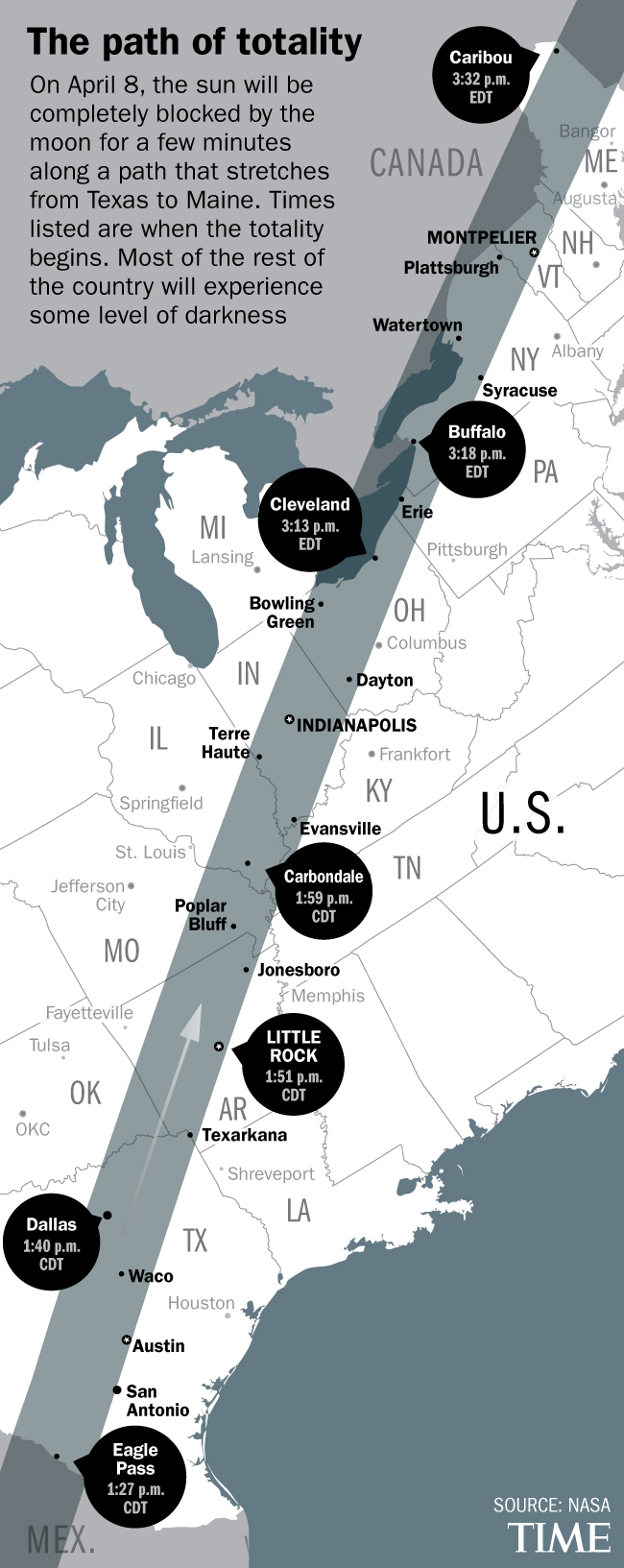
During totality, remove eye protection
A common misconception about solar eclipses is that you must keep your solar protection glasses on at all times. However, if you are in the path of totality and the sun is 100% covered by the moon, you can look directly at the eclipse without eye protection. The eclipse veterans TIME spoke with strongly recommended removing solar protection from both your eyes and camera equipment during the period of totality to truly take in the experience. “Once there's totality then you should absolutely take your glasses off and look directly at the sun,” says Bryans. “If you don’t do that you’ll miss a lot of the most interesting parts of it.”
However, it is important to remember that for the 2024 eclipse, the period of totality will last for a maximum of four and a half minutes according to NASA . Make sure to check the exact timing of totality in the place where you are viewing the eclipse from, and immediately resume using solar filters right before the period of totality ends.
Read More : These Are All the Different Types of Eclipses
Observe your surroundings
One of the most fascinating things to observe during an eclipse is not just the eclipse itself, but also the way the environment around you changes. During the period of totality, you’ll be able to feel the temperature drop by about 10°F. Animals such as birds, cats, and dogs, may start to act differently as they grapple with the confusion of the sun suddenly disappearing in the middle of the day. You may even be able to see some brighter stars and planets when you look at the sky once the sun is covered up.
What to consider after your solar eclipse trip
Journal about your experience.
After the eclipse, you may want to journal about your thoughts and feelings to help remember the experience and take in the beauty of what you just witnessed. Seeing an eclipse can sometimes cause people to feel overwhelmed with emotion, and journaling can be a good way to process those feelings. “It’s one of the most emotion-evoking natural events that you can see,” says Gianforte. “It’s like if you go to the Grand Canyon or Mount Everest… it's just hard to explain it. Everyone should, at least once in their life, see a total solar eclipse.”
Wait until the next day to travel back, if possible
Just as you may anticipate traffic jams on the way there, you should also expect similar delays on the way back. It’s a good idea to hang around an extra day since it could help you avoid congestion on the roads.
More Must-Reads From TIME
- Jane Fonda Champions Climate Action for Every Generation
- Passengers Are Flying up to 30 Hours to See Four Minutes of the Eclipse
- Biden’s Campaign Is In Trouble. Will the Turnaround Plan Work?
- Essay: The Complicated Dread of Early Spring
- Why Walking Isn’t Enough When It Comes to Exercise
- The Financial Influencers Women Actually Want to Listen To
- The Best TV Shows to Watch on Peacock
- Want Weekly Recs on What to Watch, Read, and More? Sign Up for Worth Your Time
Contact us at [email protected]
You May Also Like
How long does it take to get to the moon?
Here we explore how long it takes to get to the moon and the factors that affect the journey to our rocky companion.

- Traveling at the speed of light
- Fastest spacecraft
- Driving to the moon
Q&A with an expert
- Calculating travel times
Moon mission travel times
Additional resources, bibliography.
If you wanted to go to the moon, how long would it take?
Well, the answer depends on a number of factors ranging from the positions of Earth and the moon , to whether you want to land on the surface or just zip past, and especially to the technology used to propel you there.
The average travel time to the moon (providing the moon is your intended destination), using current rocket propulsion is approximately three days. The fastest flight to the moon without stopping was achieved by NASA's New Horizons probe when it passed the moon in just 8 hours 35 minutes while en route to Pluto .
Currently, the fastest crewed flight to the moon was Apollo 8. The spacecraft entered lunar orbit just 69 hours and 8 minutes after launch according to NASA .
Here we take a look at how long a trip to the moon would take using available technology and explore the travel times of previous missions to our lunar companion.
Related: Missions to the moon: Past, present and future
How far away is the moon?
To find out how long it takes to get to the moon, we first must know how far away it is.
The average distance between Earth and the moon is about 238,855 miles (384,400 kilometers), according to NASA. But because the moon does not orbit Earth in a perfect circle, its distance from Earth is not constant. At its closest point to Earth — known as perigee — the moon is about 226,000 miles (363,300 km) away and at its farthest — known as apogee — it's about 251,000 miles (405,500 km) away.
How long would it take to travel to the moon at the speed of light?
Light travels at approximately 186,282 miles per second (299,792 km per second). Therefore, a light shining from the moon would take the following amount of time to reach Earth (or vice versa):
- Closest point: 1.2 seconds
- Farthest point: 1.4 seconds
- Average distance: 1.3 seconds
How long would it take to travel to the moon on the fastest spacecraft so far?

The fastest spacecraft is NASA's Parker Solar Probe , which keeps breaking its own speed records as it moves closer to the sun. On Nov. 21, 2021, the Parker Solar Probe clocked a top speed of 101 miles (163 kilometers) per second during its 10th close flyby of our star, which translates to a blistering 364,621 mph (586,000 kph). According to a NASA statement , when the Parker Solar Probe comes within 4 million miles (6.2 million kilometers) of the solar surface in December 2024, the spacecraft's speed will top 430,000 miles per hour (692,000 km/h)!
So if you were theoretically able to hitch a ride on the Parker Solar Probe and take it on a detour from its sun-focused mission to travel in a straight line from Earth to the moon, traveling at the speeds the probe reaches during its 10th flyby (101 miles per second), the time it would take you to get to the moon would be:
- Closest point: 37.2 minutes
- Farthest point: 41.4 minutes
- Average distance: 39.4 minutes
How long would it take to drive to the moon?

Let's say you decided to drive to the moon (and that it was actually possible). At an average distance of 238,855 miles (384,400 km) and driving at a constant speed of 60 mph (96 km/h), it would take about 166 days.
We asked Michael Khan, ESA Senior Mission Analyst some frequently asked questions about travel times to the moon.
Michael Khan is a Senior Mission Analyst for the European Space Agency (ESA). His work involves studying the orbital mechanics for journeys to planetary bodies including Mars.
And what affects the travel time?
The time it takes to get from one celestial body to another depends largely on the energy that one is willing to expend. Here "energy" refers to the effort put in by the launch vehicle and the sum of the manoeuvres of the rocket motors aboard the spacecraft, and the amount of propellant that is used. In space travel, everything boils down to energy. Spaceflight is the clever management of energy.
Some common solutions for transfers to the moon are 1) the Hohmann-like transfer and 2) the Free Return Transfer. The Hohmann Transfer is often referred to as the one that requires the lowest energy, but that is true only if you want the transfer to last only a few days and, in addition, if some constraints on the launch apply. Things get very complicated from there on, so I won't go into details.
The transfer duration for the Hohmann-like transfer is around 5 days. There is some variation in this duration because the moon orbit is eccentric, so its distance from the Earth varies quite a bit with time, and with it, the characteristics of the transfer orbit.
The Free Return transfer is a popular transfer for manned spacecraft. It requires more energy than the Hohmann-like transfer, but it is a lot safer, because its design is such that if the rocket engine fails at the moment you are trying to insert into the orbit around the Moon, the gravity of the Moon will deflect the orbit exactly such that it returns to the Earth. So even with a defective propulsion system, you can still get the people back safely. The Apollo missions flew on Free Return transfers. They take around 3 days to reach the moon.
Why are journey times a lot slower for spacecraft intending to orbit or land on the target body e.g. Mars compared to those that are just going to fly by?
If you want your spacecraft to enter Mars orbit or to land on the surface, you add a lot of constraints to the design problem. For an orbiter, you have to consider the significant amount of propellant required for orbit insertion, while for a lander, you have to design and build a heat shield that can withstand the loads of atmospheric entry. Usually, this will mean that the arrival velocity of Mars cannot exceed a certain boundary. Adding this constraint to the trajectory optimisation problem will limit the range of solutions you obtain to transfers that are Hohmann-like. This usually leads to an increase in transfer duration.
Calculating travel times to the moon — it's not that straightforward
A problem with the previous calculations is that they measure the distance between Earth and the moon in a straight line and assume the two bodies remain at a constant distance; that is, assuming that when a probe is launched from Earth, the moon would remain the same distance away by the time the probe arrives.
In reality, however, the distance between Earth and the moon is not constant due to the moon's elliptical orbit, so engineers must calculate the ideal orbits for sending a spacecraft from Earth to the moon. Like throwing a dart at a moving target from a moving vehicle, they must calculate where the moon will be when the spacecraft arrives, not where it is when it leaves Earth.
Another factor engineers need to take into account when calculating travel times to the moon is whether the mission has the intention of landing on the surface or entering lunar orbit. In these cases, traveling there as fast as possible is not feasible as the spacecraft needs to arrive slowly enough to perform orbit insertion maneuvers.
More than 140 missions have been launched to the moon, each with a different objective, route and travel time.
Perhaps the most famous — the crewed Apollo 11 mission — took four days, six hours and 45 minutes to reach the moon. Apollo 10 still holds the record for the fastest speed any humans have ever traveled when it clocked a top speed of while the crew of Apollo 10 traveled 24,791 mph (39,897 kph) relative to Earth as they rocketed back to our planet on May 26, 1969.
The first uncrewed flight test of NASA's Orion spacecraft and space launch system rocket — Artemis 1 — reached the moon on flight day six of its journey and swooped down to just 80 miles (130 km) above the lunar surface to gain a gravitational boost to enter a so-called "distant retrograde orbit."
Read more about how space navigation works with accurate timekeeping with these resources from NASA . Learn more about how before the days of GPS engineers were able to navigate from Earth to the moon with such precision with this article by Gwendolyn Vines Gettliffe published at the Massachusetts Institute of Technology (MIT) 'ask an engineer' feature.
Hatfield, M. (2021). Space Dust Presents Opportunities, Challenges as Parker Solar Probe Speeds Back toward the Sun – Parker Solar Probe. [online] blogs.nasa.gov. Available at: https://blogs.nasa.gov/parkersolarprobe/2021/11/10/space-dust-presents-opportunities-challenges-as-parker-solar-probe-speeds-back-toward-the-sun/ .
NASA (2011). Apollo 8. [online] NASA. Available at: https://www.nasa.gov/mission_pages/apollo/missions/apollo8.html .
www.rmg.co.uk. (n.d.). How many people have walked on the Moon? [online] Available at: https://www.rmg.co.uk/stories/topics/how-many-people-have-walked-on-moon .
Join our Space Forums to keep talking space on the latest missions, night sky and more! And if you have a news tip, correction or comment, let us know at: [email protected].
Get the Space.com Newsletter
Breaking space news, the latest updates on rocket launches, skywatching events and more!

Daisy Dobrijevic joined Space.com in February 2022 having previously worked for our sister publication All About Space magazine as a staff writer. Before joining us, Daisy completed an editorial internship with the BBC Sky at Night Magazine and worked at the National Space Centre in Leicester, U.K., where she enjoyed communicating space science to the public. In 2021, Daisy completed a PhD in plant physiology and also holds a Master's in Environmental Science, she is currently based in Nottingham, U.K. Daisy is passionate about all things space, with a penchant for solar activity and space weather. She has a strong interest in astrotourism and loves nothing more than a good northern lights chase!
NASA gets $25.4 billion in White House's 2025 budget request
'Interstellar meteor' vibrations actually caused by a truck, study suggests
Stars, planets and more will be visible during the total solar eclipse on April 8. Here's where to look
- UFOareAngels The fact that we are still asking this question proves we never went to the moon and are never going back. Reply
- Rathelor Those Parker Solar Probe travel times seems a little too high. Reply
- View All 2 Comments
Most Popular
By Fran Ruiz January 29, 2024
By Fran Ruiz January 26, 2024
By Conor Feehly January 05, 2024
By Keith Cooper December 22, 2023
By Fran Ruiz December 20, 2023
By Fran Ruiz December 19, 2023
By Fran Ruiz December 18, 2023
By Tantse Walter December 18, 2023
By Robert Lea December 05, 2023
By Robert Lea December 04, 2023
By Robert Lea December 01, 2023
- 2 Why I'm going to Missouri near the centerline for the solar eclipse on April 8
- 3 New 'Star Wars: Unlimited — Spark of Rebellion' trading card game strikes our galaxy
- 4 There's an April Fools' Day prank about the 2024 solar eclipse — don't fall for it
- 5 April 8 solar eclipse: 6 zoos on the path of totality — and why animals react strangely to 'nighttime during the day'
Advertisement
‘A Lot of Chaos’: Bridge Collapse Creates Upheaval at Largest U.S. Port for Car Trade
A bridge collapse closed Baltimore’s port, an important trade hub that ranks first in the nation by the volume of automobiles and light trucks it handles.
- Share full article
Shipping in the Port of Baltimore
Monthly cargo handled by the Port of Baltimore

By Peter Eavis and Jenny Gross
- March 26, 2024
The Baltimore bridge disaster on Tuesday upended operations at one of the nation’s busiest ports, with disruptions likely to be felt for weeks by companies shipping goods in and out of the country — and possibly by consumers as well.
The upheaval will be especially notable for auto makers and coal producers for whom Baltimore has become one of the most vital shipping destinations in the United States.
As officials began to investigate why a nearly 1,000-foot cargo ship ran into the Francis Scott Key Bridge in the middle of the night, companies that transport goods to suppliers and stores scrambled to get trucks to the other East Coast ports receiving goods diverted from Baltimore. Ships sat idle elsewhere, unsure where and when to dock.
“It’s going to cause a lot of chaos,” said Paul Brashier, vice president for drayage and intermodal at ITS Logistics.
The closure of the Port of Baltimore is the latest hit to global supply chains, which have been strained by monthslong crises at the Panama Canal, which has had to slash traffic because of low water levels; and the Suez Canal, which shipping companies are avoiding because of attacks by the Houthis on vessels in the Red Sea.
The auto industry now faces new supply headaches.
Last year, 570,000 vehicles were imported through Baltimore, according to Sina Golara, an assistant professor of supply chain management at Georgia State University. “That’s a huge amount,” he said, equivalent to nearly a quarter of the current inventory of new cars in the United States.
The Baltimore port handled a record amount of foreign cargo last year, and it was the 17th biggest port in the nation overall in 2021, ranked by total tons, according to Bureau of Transportation Statistics.
Baltimore Ranks in the Top 20 U.S. Ports
Total trade in 2021 in millions of tons
Baltimore ranks first in the United States for the volume of automobiles and light trucks it handles, and for vessels that carry wheeled cargo, including farm and construction machinery, according to a statement by Gov. Wes Moore of Maryland last month.
The incident is another stark reminder of the vulnerability of the supply chains that transport consumer products and commodities around the world.
The extent of the disruption depends on how long it takes to reopen shipping channels into the port of Baltimore. Experts estimate it could take several weeks.
Baltimore is not a leading port for container ships, and other ports can likely absorb traffic that was headed to Baltimore, industry officials said.
Stephen Edwards, the chief executive of the Port of Virginia, said it was expecting a vessel on Tuesday that was previously bound for Baltimore, and that others would soon follow. “Between New York and Virginia, we have sufficient capacity to handle all this cargo,” Mr. Edwards said, referring to container ships.
“Shipping companies are very agile,” said Jean-Paul Rodrigue, a professor in the department of maritime business administration at Texas A&M University-Galveston. “In two to three days, it will be rerouted.”
But other types of cargo could remain snarled.
Alexis Ellender, a global analyst at Kpler, a commodities analytics firm, said he expected the port closure to cause significant disruption of U.S. exports of coal. Last year, about 23 million metric tons of coal exports were shipped from the port of Baltimore, about a quarter of all seaborne U.S. coal shipments. About 12 vessel had been expected to leave the port of Baltimore in the next week or so carrying coal, according to Kpler.
He noted that it would not make a huge dent on the global market, but he added that “the impact is significant for the U.S. in terms of loss of export capacity.”
“You may see coal cargoes coming from the mines being rerouted to other ports instead,” he said, with a port in Norfolk, Va., the most likely.
If auto imports are reduced by Baltimore’s closure, inventories could run low, particularly for models that are in high demand.
“We are initiating discussions with our various transportation providers on contingency plans to ensure an uninterrupted flow of vehicles to our customers and will continue to carefully monitor this situation,” Stellantis, which owns Chrysler, Dodge, Jeep and Ram, said in a statement.
Other ports have the capacity to import cars, but there may not be enough car transporters at those ports to handle the new traffic.
“You have to make sure the capacity exists all the way in the supply chain — all the way to the dealership,” said Mr. Golara, the Georgia State professor.
A looming battle is insurance payouts, once legal liability is determined. The size of the payout from the insurer is likely to be significant and will depend on factors including the value of the bridge, the scale of loss of life compensation owed to families of people who died, the damage to the vessel and disruption to the port.
The ship’s insurer, Britannia P&I Club, part of a global group of insurers, said in a statement that it was “working closely with the ship manager and relevant authorities to establish the facts and to help ensure that this situation is dealt with quickly and professionally.”
The port has also increasingly catered to large container ships like the Dali, the 948-foot-long cargo vessel carrying goods for the shipping giant Maersk that hit a pillar of the bridge around 1:30 a.m. on Tuesday. The Dali had spent two days in Baltimore’s port before setting off toward the 1.6-mile Francis Scott Key Bridge.
State-owned terminals, managed by the Maryland Port Administration, and privately owned terminals in Baltimore transported a record 52.3 million tons of foreign cargo in 2023, worth $80 billion.
Materials transported in large volumes through the city’s port include coal, coffee and sugar. It was the ninth-busiest port in the nation last year for receiving foreign cargo, in terms of volume and value.
The bridge’s collapse will also disrupt cruises traveling in and out of Baltimore. Norwegian Cruise Line last year began a new fall and winter schedule calling at the Port of Baltimore.
An earlier version of this article misstated the Port of Baltimore’s rank among U.S. ports. It was the nation’s 17th biggest port by total tons in 2021, not the 20th largest.
How we handle corrections
Peter Eavis reports on business, financial markets, the economy and companies across different sectors. More about Peter Eavis
Jenny Gross is a reporter for The Times in London covering breaking news and other topics. More about Jenny Gross
Awesome, you're subscribed!
Thanks for subscribing! Look out for your first newsletter in your inbox soon!
The best things in life are free.
Sign up for our email to enjoy your city without spending a thing (as well as some options when you’re feeling flush).
Déjà vu! We already have this email. Try another?
By entering your email address you agree to our Terms of Use and Privacy Policy and consent to receive emails from Time Out about news, events, offers and partner promotions.
- Things to Do
- Food & Drink
- Arts & Culture
- Coca-Cola Foodmarks
- Los Angeles
Get us in your inbox
🙌 Awesome, you're subscribed!

Easter getaways: these are the best (and worst) times to travel over Easter weekend
Everything you need to know to make your Easter travels as smooth as possible, from airport disruption to busiest traffic times

After a long, hard, 40 day trek through the desert and his own death, Jesus is coming back this Sunday, as he tends to this time of year. After a similarly difficult 14 hour crawl up the M1, you are also likely coming home this weekend, for a couple of days of gorging on chocolate, arguing with your extended family about Kate Middleton, and deflecting questions about why you haven’t bought a house yet – a cause just as noble as saving mankind from sin.
Delays are expected on pretty much every form of transport, with rail, ferry, and air travel providers all saying this is set to be their busiest Easter weekend in a long time. If you’re planning your travels, here’s everything you need to know to avoid the worst of the traffic and overall misery on your way back home.
What is the busiest day for travel over Easter weekend?
As you might expect, Good Friday is expected to be the busiest day for drivers. According to a survey conducted by research group Find Out Now, an estimated 2.6 million journeys will be made by car this Friday (March 29), with a further 2.3 million to be made on Saturday and Sunday. Adding in people who plan to travel but don’t know exactly when, there’s going to be roughly 14 million journeys made by Brits in cars over the next few days. That’s one trip for every four people in the UK. In short: it’s going to be busy.
Traffic wise, travel software company Inrix predict that this afternoon (March 28 between 2pm and 7pm) will see motorways at their most congested, with some journey times being doubled. The M25 between the M23 Gatwick and M1 Hertfordshire junctions are expected to be the busiest in the country, and the M5 Southbound between Bristol and Taunton is also likely going to be pretty tightly packed, so avoid those if you can.
This rush is thanks to Easter falling closer than usual to schools breaking off, so we're all trying to get where we're going at the exact same times.
What’s the best time to travel?
Ultimately, travel this weekend is going to be a bit grim. An analyst from Inrix explained that drivers ‘should be prepared for longer journeys than normal throughout the entire weekend’, so it’s really swings and roundabouts.
Some times are better than others, such as early in the mornings or very late at night. Alice Simpson, a spokesperson for RAC, says, ‘Anyone who can delay leaving on March 28 until much later in the evening or set off as early as possible on Good Friday is likely to have a better journey than those who travel during the peak periods of the day.’
‘Lengthy queues can be expected along routes to the usual hotspots like the West Country, the Lake District and the south coast, especially during the middle of the day when most people make trips.’
What about airports?
If you’re getting away from the rain and subzero temperatures this weekend, you’re not alone. Bristol, Newcastle, and Edinburgh airport all told the Independent that they are seeing record passengers this Easter. With so many Brits heading to warmer pastures like Barcelona, Dubai, and Alicante, it’s probably wise to factor in some delays to your plans if you’re travelling between Thursday and Monday.
What’s happening with trains over Easter weekend?
As for travellers braving the railways, your souls are not to be spared from this wretched weekend’s disruptions. Network Rail is, very cleverly, shutting down part of the main route connecting London to the north and Scotland over the Bank Holiday weekend, so expect to see delays if you’re going between the capital and anywhere above Birmingham.
Strikes will also affect journeys into April, and you can keep up to date on all the latest strike information here .
Are ferries running as normal?
Ferries running internally within the UK should all run as normal, so those crossing the Irish sea or heading to domestic islands should be fine. Getting across the channel is a little more complex, as post-Brexit regulations add some time to processing and customs.
Those crossing from the port of Dover should expect some delays, as security has been tightened even further following the recent Moscow concert attack.
Did you see that these are the UK’s six best holiday homes right now ?
Plus: everything you need to know about when and how to see the April 8 eclipse .
Stay in the loop: sign up to our free Time Out UK newsletter for the latest UK news and the best stuff happening across the country.
- Annie McNamee Contributor, Time Out London and UK
Share the story
An email you’ll actually love
Discover Time Out original video
- Press office
- Investor relations
- Work for Time Out
- Editorial guidelines
- Privacy notice
- Do not sell my information
- Cookie policy
- Accessibility statement
- Terms of use
- Modern slavery statement
- Manage cookies
- Advertising
- Time Out Market
Time Out products
- Time Out Worldwide

IMAGES
VIDEO
COMMENTS
In essence, time travel into the past would be possible with faster-than-light travel. Since we view time as the unbroken chain of causes and effects going from the past to the future, breaking ...
It takes a long time for the light from faraway galaxies to reach us. So, when we look into the sky with a telescope, we are seeing what those stars and galaxies looked like a very long time ago. However, when we think of the phrase "time travel," we are usually thinking of traveling faster than 1 second per second.
The final step is to calculate the total distance that the light has traveled within the time. You can calculate this answer using the speed of light formula: distance = speed of light × time. Thus, the distance that the light can travel in 100 seconds is 9.46×10¹² km/year × 2 years = 1.892×10¹³ km.
The speed of light traveling through a vacuum is exactly 299,792,458 meters (983,571,056 feet) per second. That's about 186,282 miles per second — a universal constant known in equations as "c ...
Light Travel The answer is simply light. The term "light-year" shows up a lot in astronomy. This is a measure of distance that means exactly what it says - the distance that light travels in one year. Given that the speed of light is 186,000 miles (299,000 kilometers) per second, light can cover some serious […]
Using the equation Rate × Time = Distance, you can divide any distance by this number to figure out the time it would take light to cross that distance. In this way, we can see that light takes 1.5 × 10 8 / 3 × 10 5 = 500 seconds to reach Earth from the Sun, or just over 8 minutes. It takes light about 40 times longer ( Pluto at a distance ...
While that's really close to the correct value, it's actually slightly wrong. The experience of time is dependent on motion. This discrepancy between what you might expect by adding the two ...
Light from all galaxies and stars takes time to travel, and these beams of light carry information from the distant past. When astrophysicists observe a star or a galaxy through a telescope, they ...
If a spaceship were to fly at 99% of the speed of light, you'd see it travel a light-year of distance in just over a year of time. That's obvious enough, but now comes the weird part.
Information about the universe comes to us almost exclusively through various forms of light, and all such light travels at the speed of light—that is, 1 light-year every year. This sets a limit on how quickly we can learn about events in the universe. If a star is 100 light-years away, the light we see from it tonight left that star 100 ...
Such astronomical distances can be measured using light travel time, the time light takes to travel a specified distance. [Continue moving away from Earth throughout video. Earth now shrinking into the distance, orbit of Moon comes into view.] Sunlight reflected off the Moon takes 1.3 seconds to reach Earth, so the Moon is 1.3 light seconds away.
1) Electromagnetic Fields. Most of the processes that accelerate particles to relativistic speeds work with electromagnetic fields — the same force that keeps magnets on your fridge. The two components, electric and magnetic fields, like two sides of the same coin, work together to whisk particles at relativistic speeds throughout the universe.
The final step is to calculate the total distance that the light has traveled within the time. You can calculate this answer using the speed of light formula: distance = speed of light × time. Thus, the distance that the light can travel in 100 seconds is 299,792,458 m/s × 100 seconds = 29,979,245,800 m. FAQs.
1) It is impossible for matter to go at the speed of light, as it takes an amount of energy equal to mc2( 1 1−(v c)2√ − 1) m c 2 ( 1 1 − ( v c) 2 − 1) to accelerate it to a speed v v, and this energy becomes infinite as v → c v → c. In another sense, reference frames moving at the speed of light (or faster) are excluded from ...
In fact the Hubble law with time variable Hubble parameter is satisfied exactly at all times by the metric radial distance D (t) which is the spatial separation at the common time t, so. "velocity" = dD/dt = H (t)D (t). This is not true for the light travel time distance. The rate of change of the light travel time distance with observation ...
This time, let's be more ambitious and travel from our solar system to Alpha Centauri, roughly 4.35 light years away from Earth. If you travel at 99.99% the speed of light from Earth to Alpha Centauri and back, with instant acceleration and no stopping, this trip would have taken roughly eight years and eight months for people on Earth ...
Therefore, a light shining from the surface of Mars would take the following amount of time to reach Earth (or vice versa): Closest possible approach: 182 seconds, or 3.03 minutes. Closest ...
Electromagnetic radiation is one of the many ways that energy travels through space. The heat from a burning fire, the light from the sun, the X-rays used by your doctor, as well as the energy used to cook food in a microwave are all forms of electromagnetic radiation. While these forms of energy might seem quite different from one another ...
This visualization shows a jet blasting from a black hole near the speed of light. When objects reach near lightspeed, time behaves very strangely.
The light travel time effect, abbreviated by LITE or LTT (Irwin 1952, 1959), refers to the differences in the periodic mid-eclipse timing for an eclipsing binary star system that is perturbed by an external massive object (e.g., a third star in a tertiary system).For an unperturbed eclipsing binary star system, the two stars of the binary revolve around their common center of mass with a ...
Solar eclipse 2024: A traveller's guide to the best places to be when the light goes out - A narrow band marking the path of totality carves an arc of darkness across the surface of our planet
Time travel has been one of the biggest tropes in science fiction for years. ... Mallet says that his idea of a time machine centers around an "intense and continuous rotating beam of light ...
Totality explained:The real April 2024 total solar eclipse happens inside the path of totality What time is the solar eclipse on April 8? The eclipse will begin in Texas at 1:27 p.m. CDT and end ...
Read More: How Cities Around the U.S.Are Celebrating the Eclipse. Weather conditions. Another thing to think about when considering where to travel for a solar eclipse is the weather conditions in ...
The average travel time to the moon (providing the moon is your intended destination), using current rocket propulsion is approximately three days. ... Light travels at approximately 186,282 miles ...
A bridge collapse closed Baltimore's port, an important trade hub that ranks first in the nation by the volume of automobiles and light trucks it handles. Monthly cargo handled by the Port of ...
Traffic wise, travel software company Inrix predict that this afternoon (March 28 between 2pm and 7pm) will see motorways at their most congested, with some journey times being doubled.
The stunning collapse of the Francis Scott Key Bridge on Tuesday will have economic impacts far beyond the city of Baltimore.. The big picture: The Port of Baltimore, one of the busiest in the U.S., has halted vessel traffic indefinitely in the wake of the bridge's collapse — which is expected to affect the flow of commerce in the U.S. Maryland Gov. Wes Moore (D) declared a state of ...
Baltimore ranks first among US ports for autos and light trucks, handling a record 850,000 vehicles last year. ... and would communicate any. updates to guests and travel partners once plans had ...